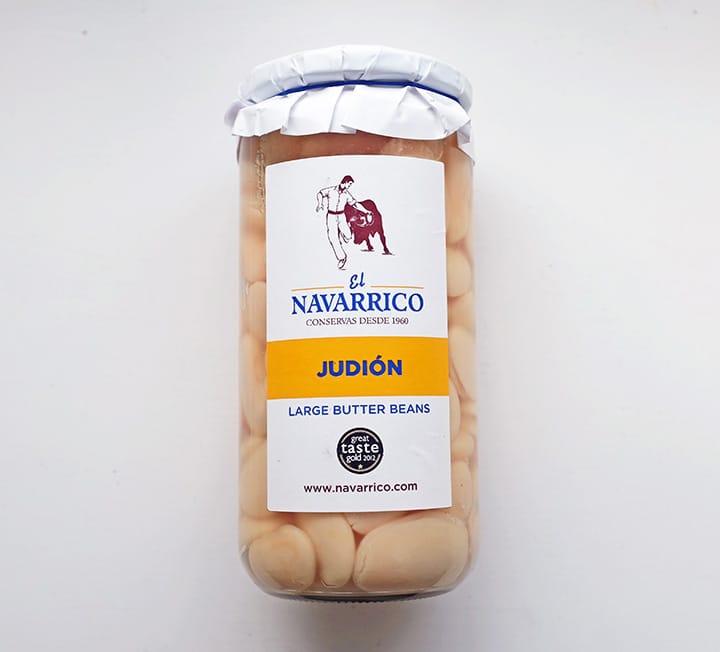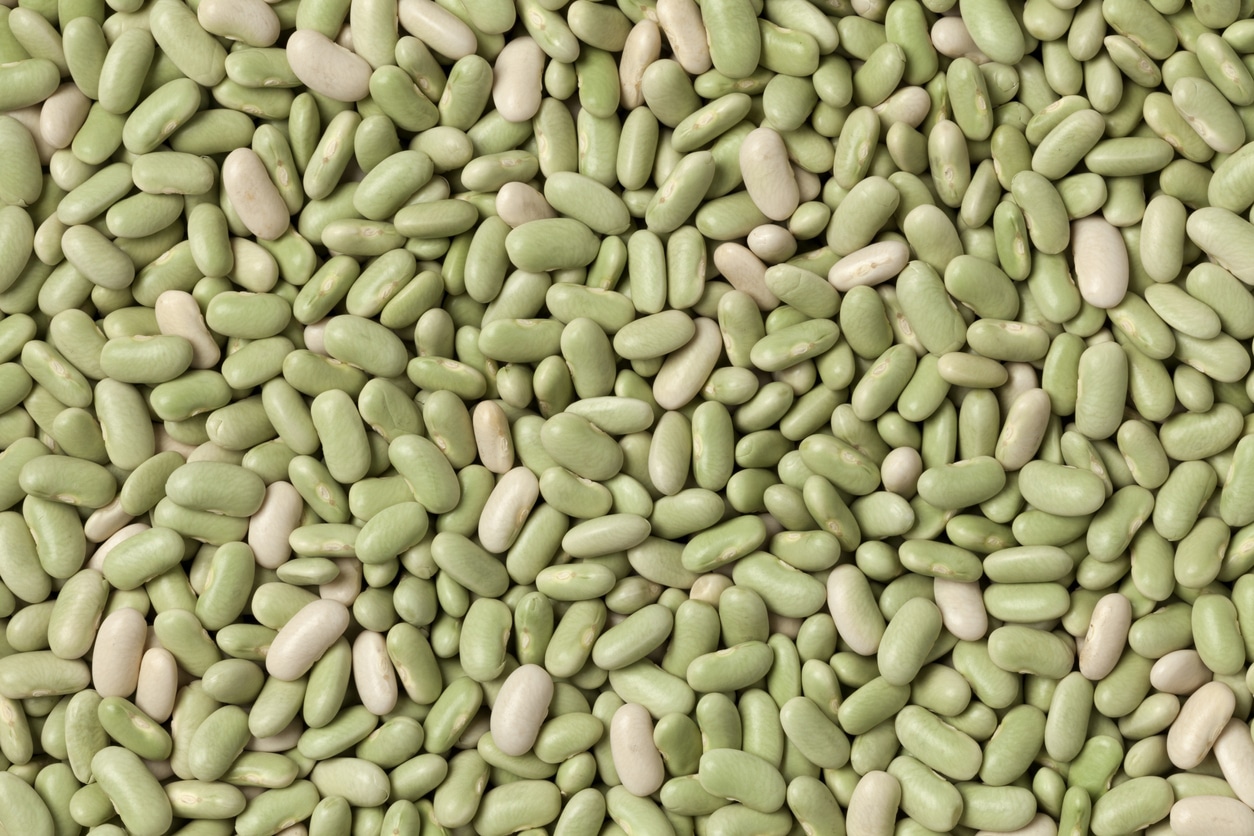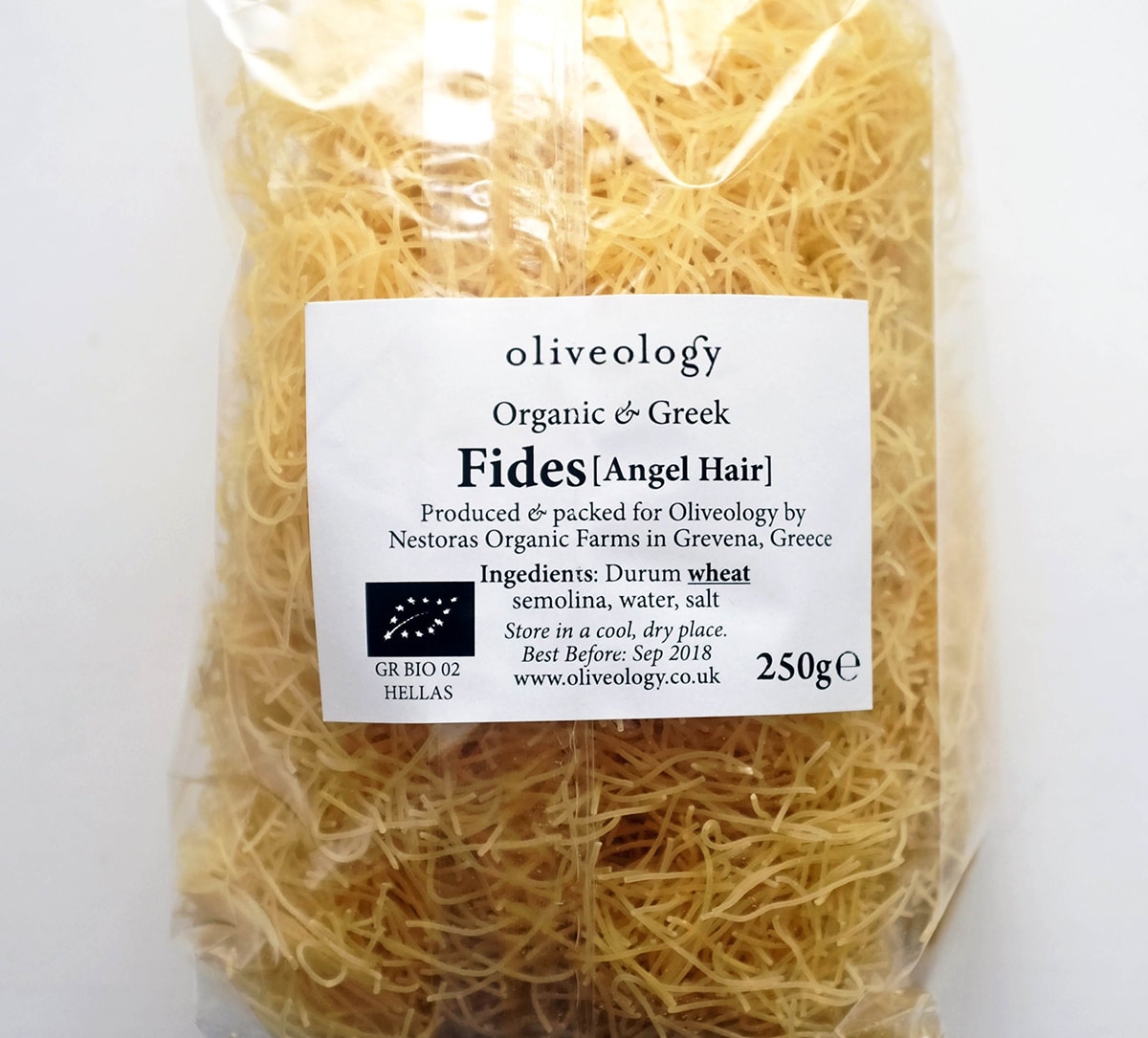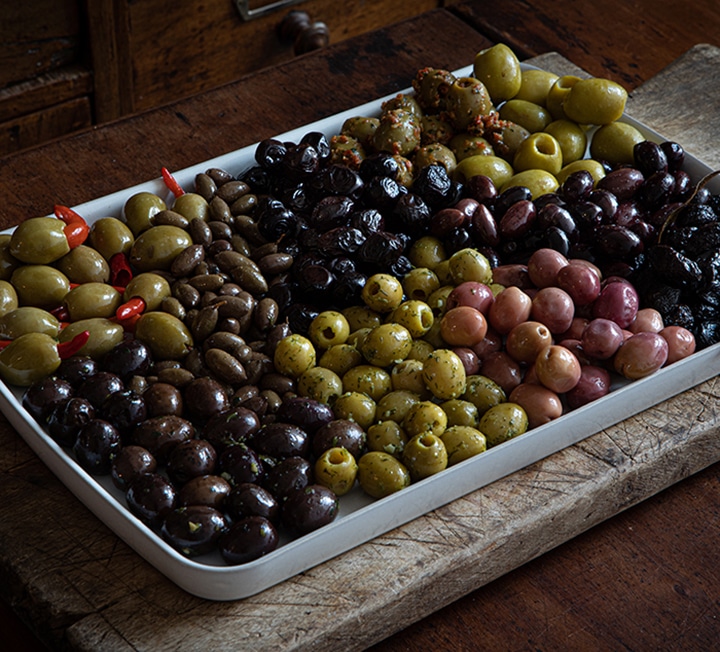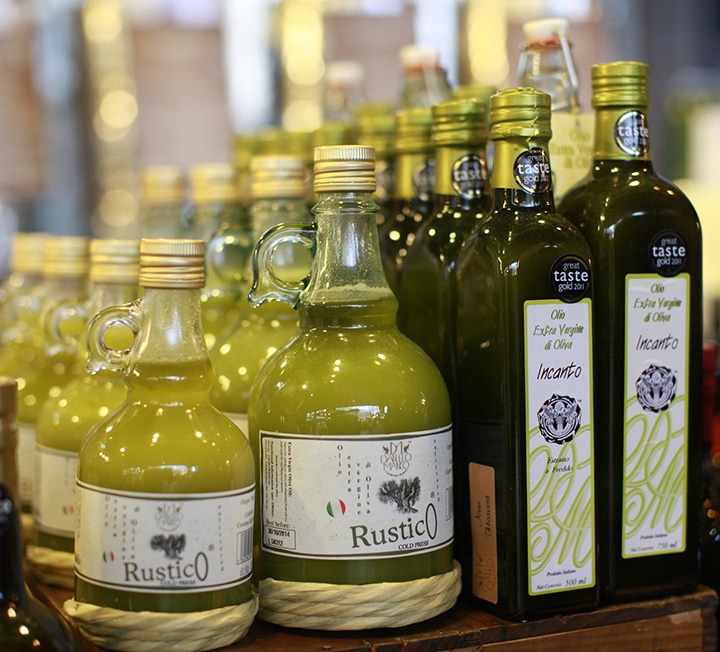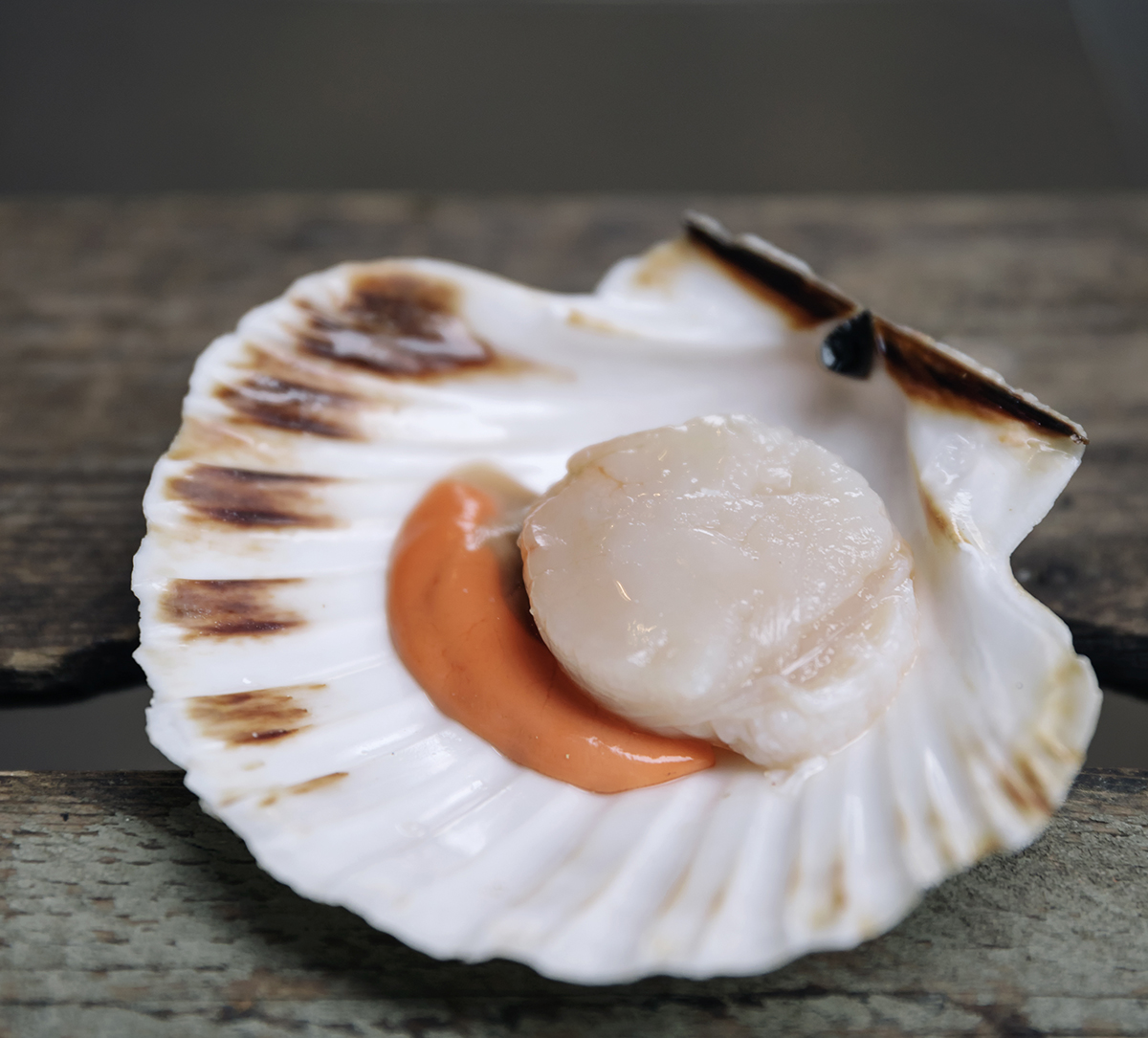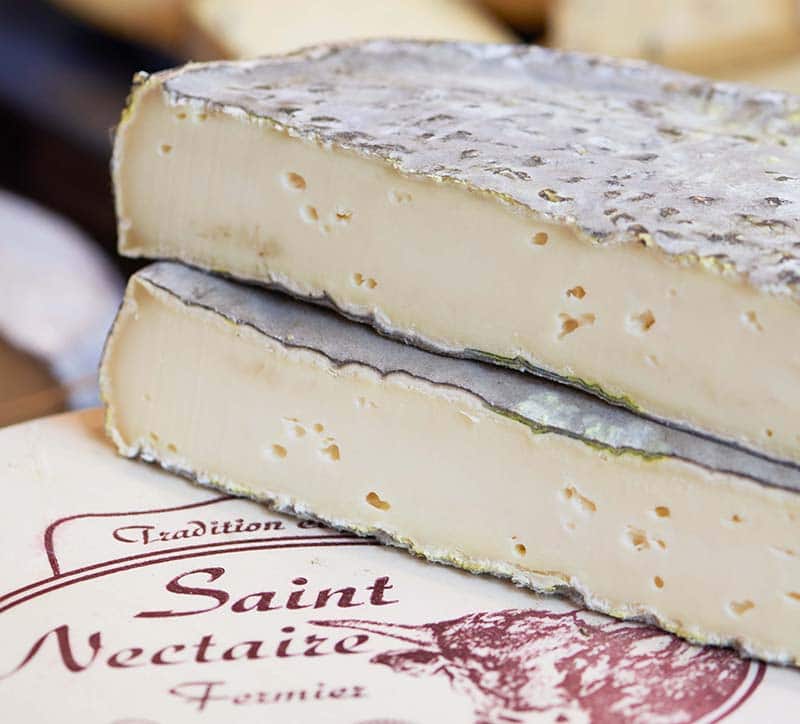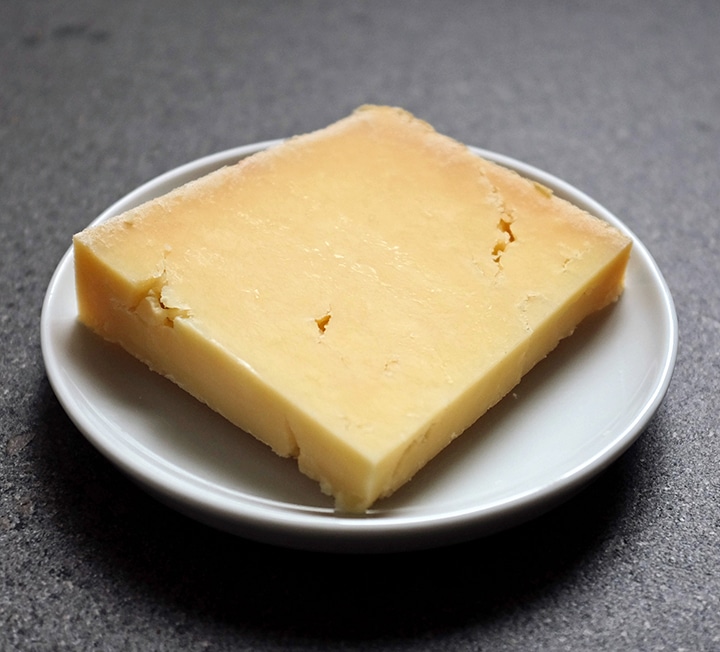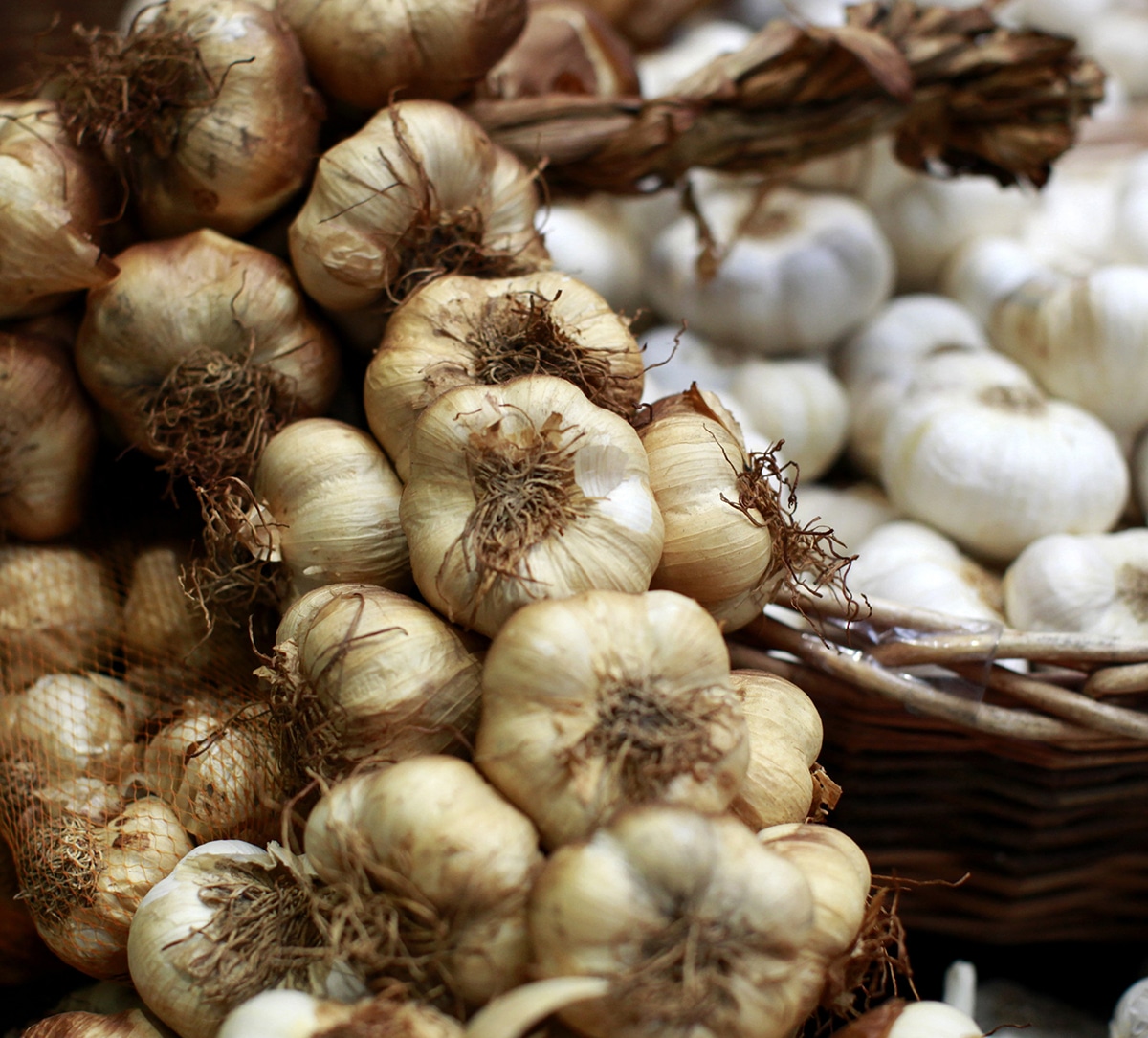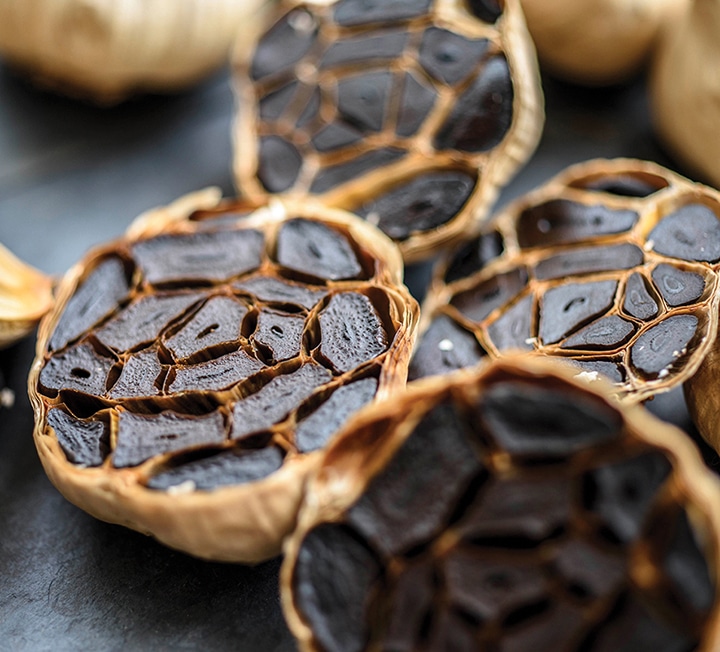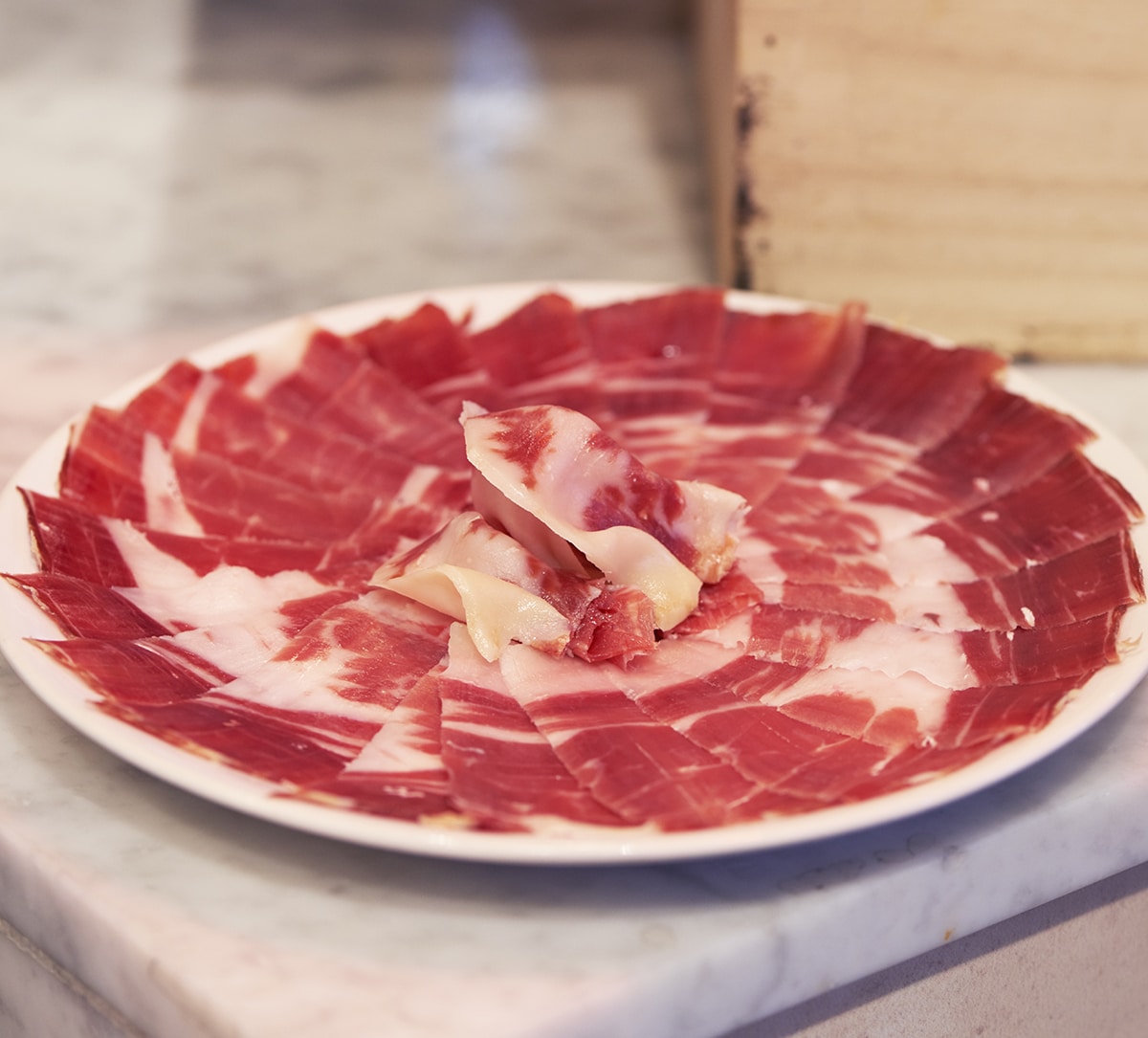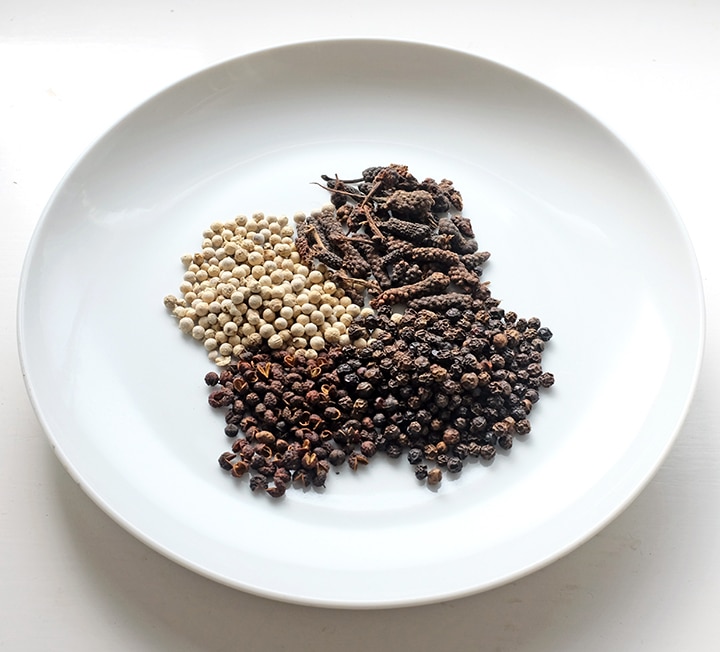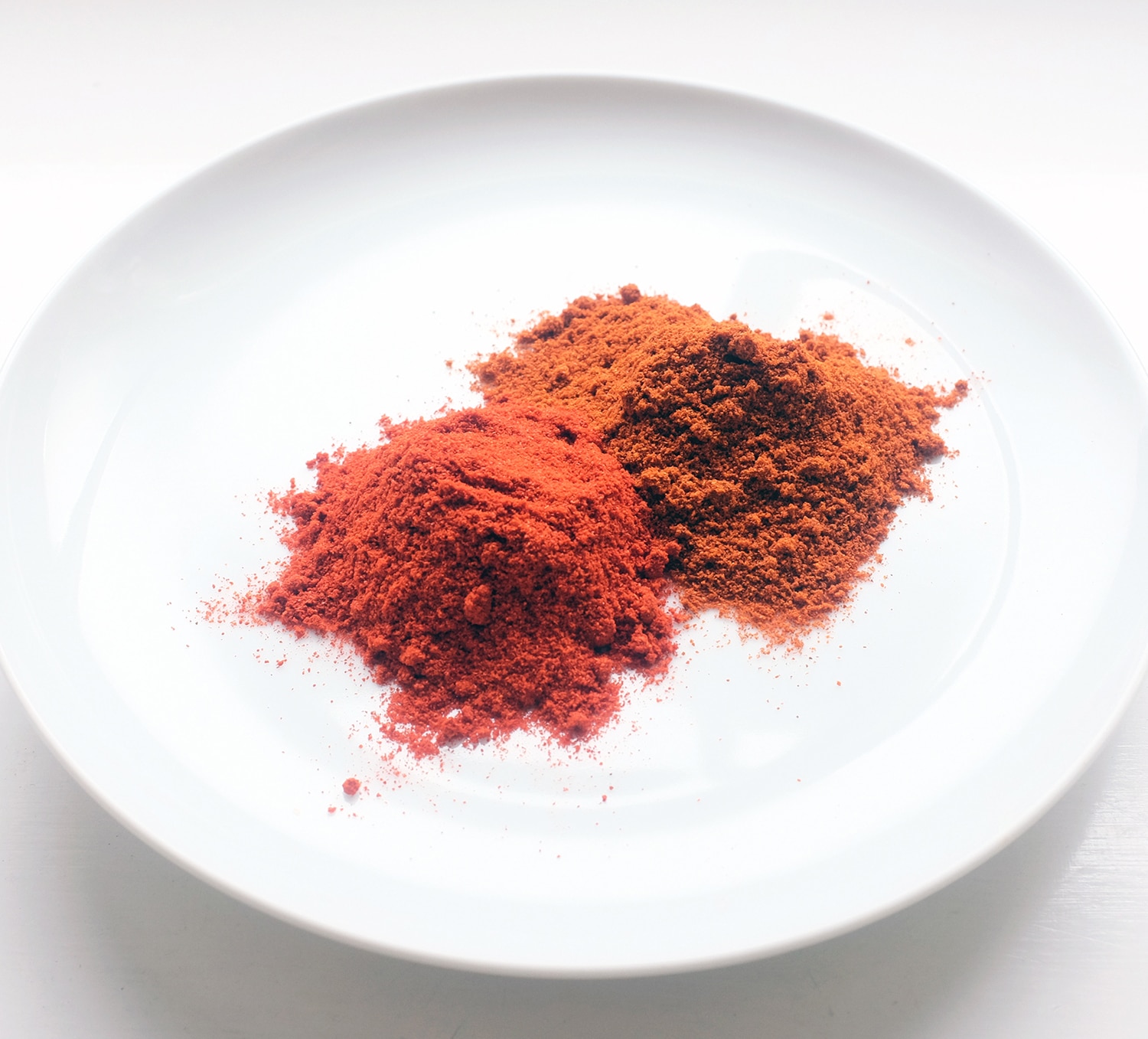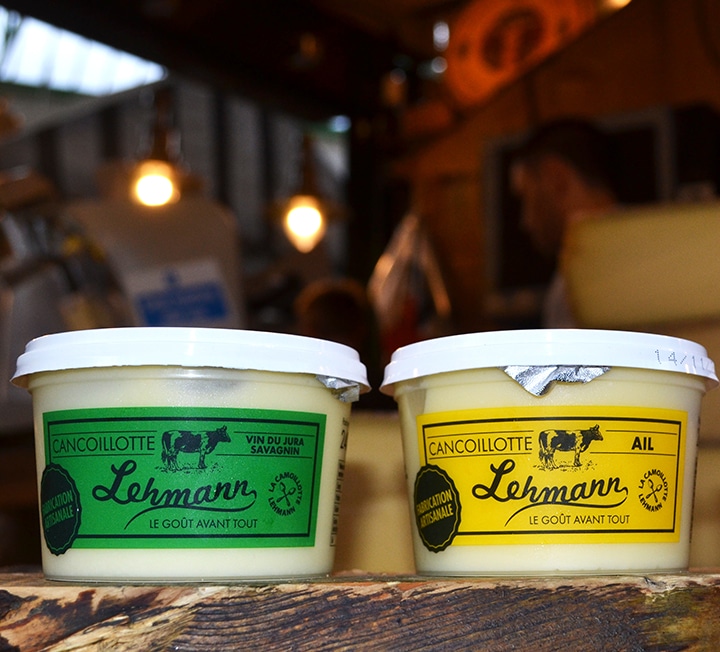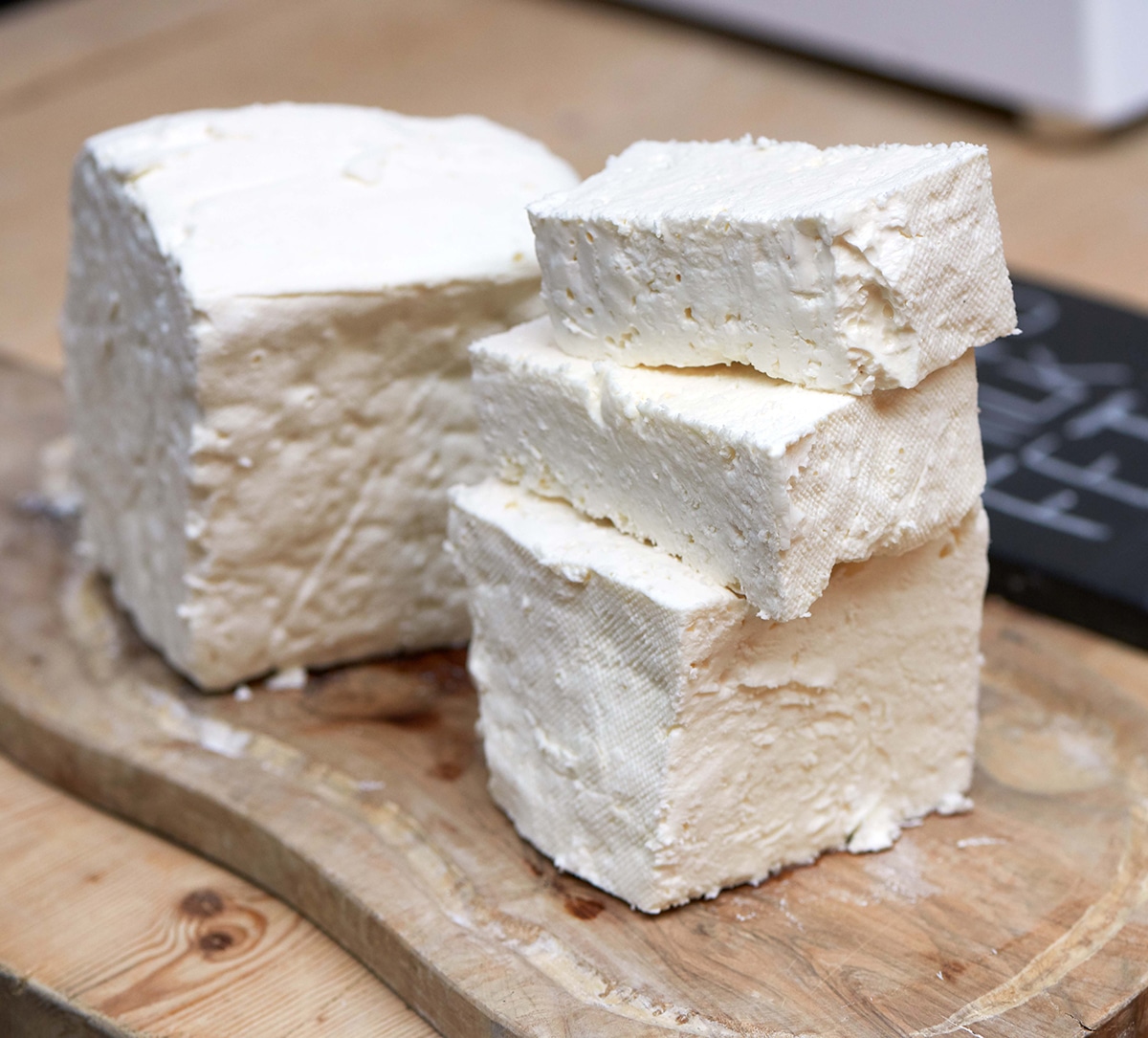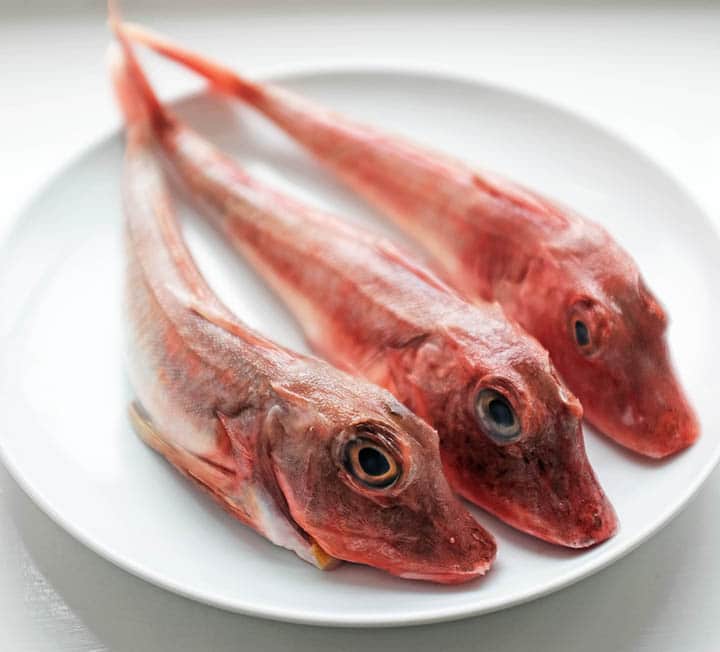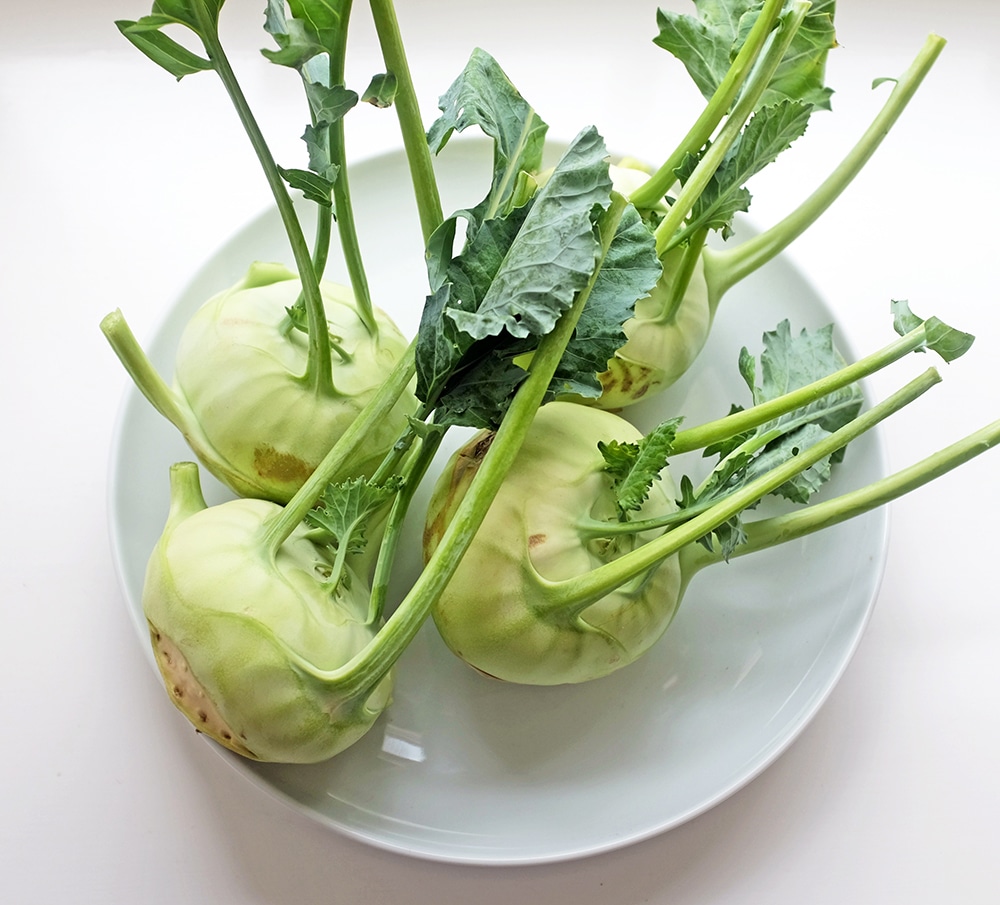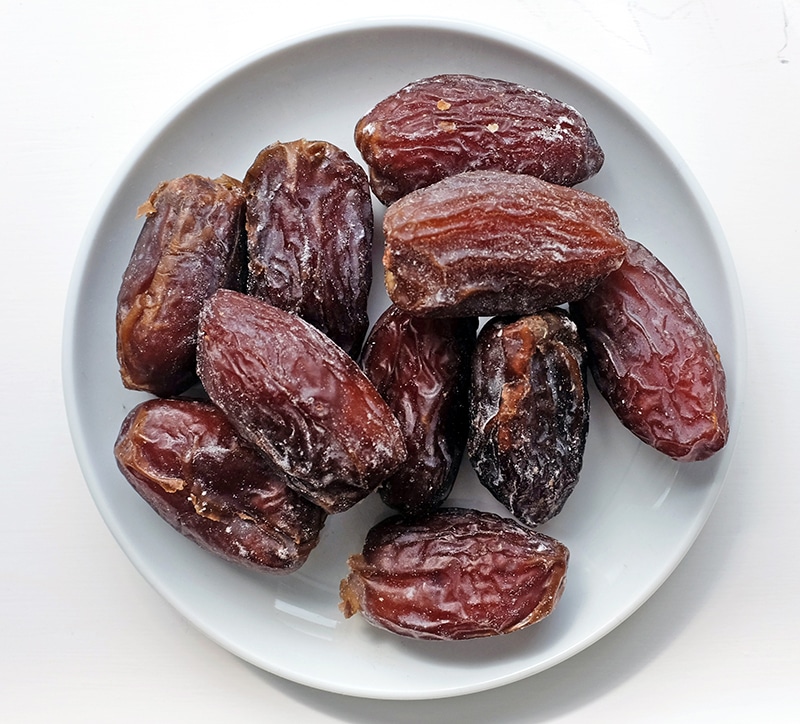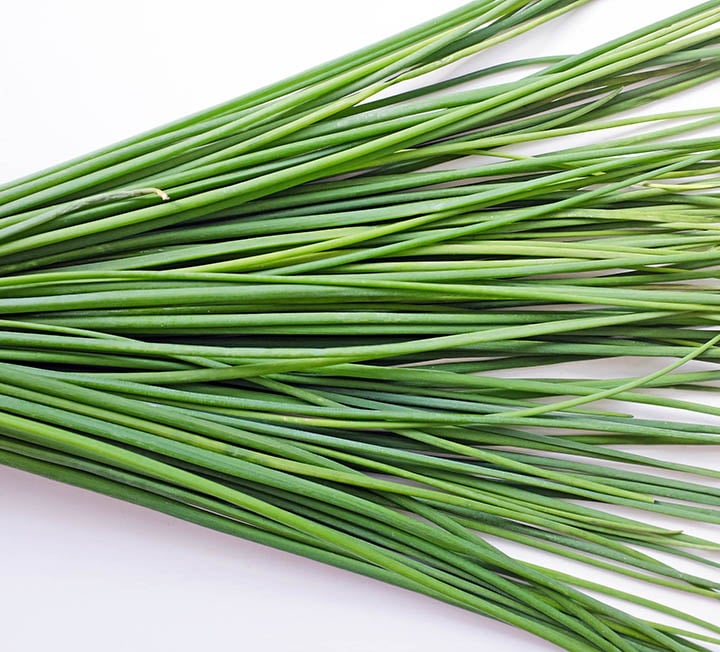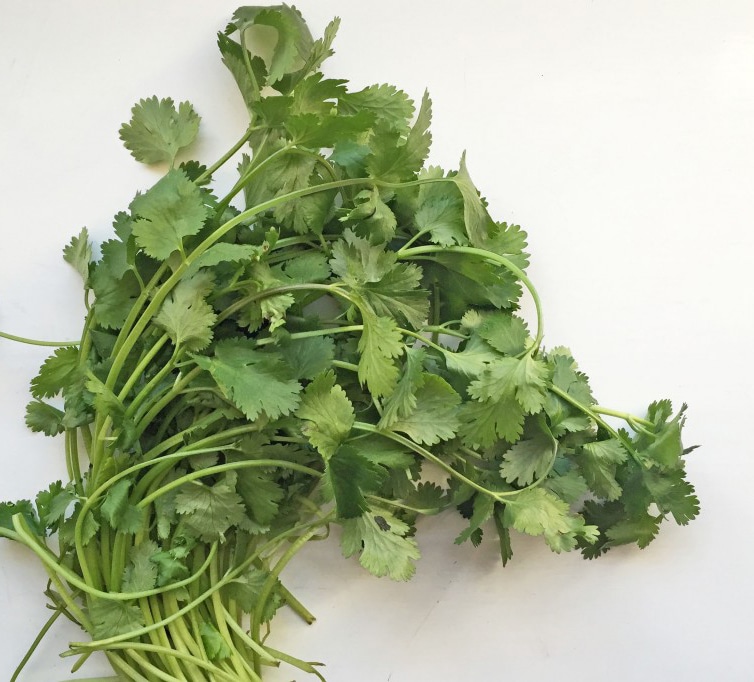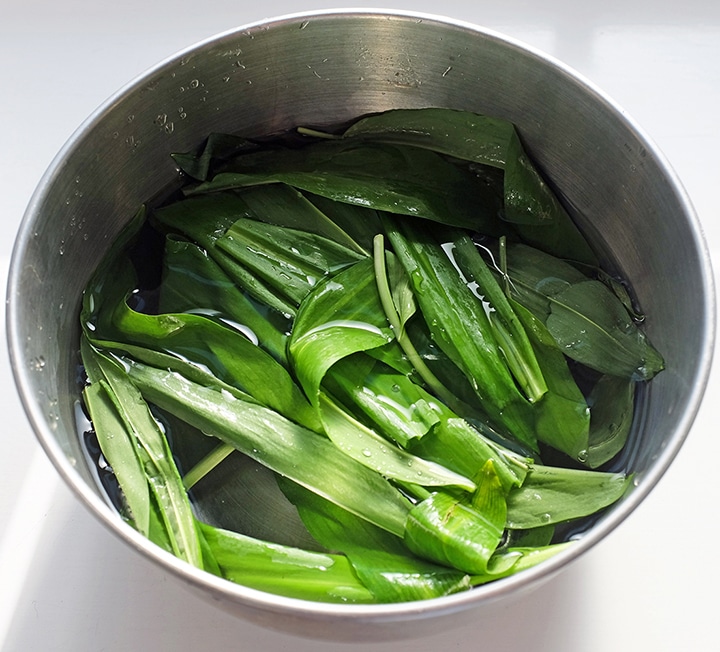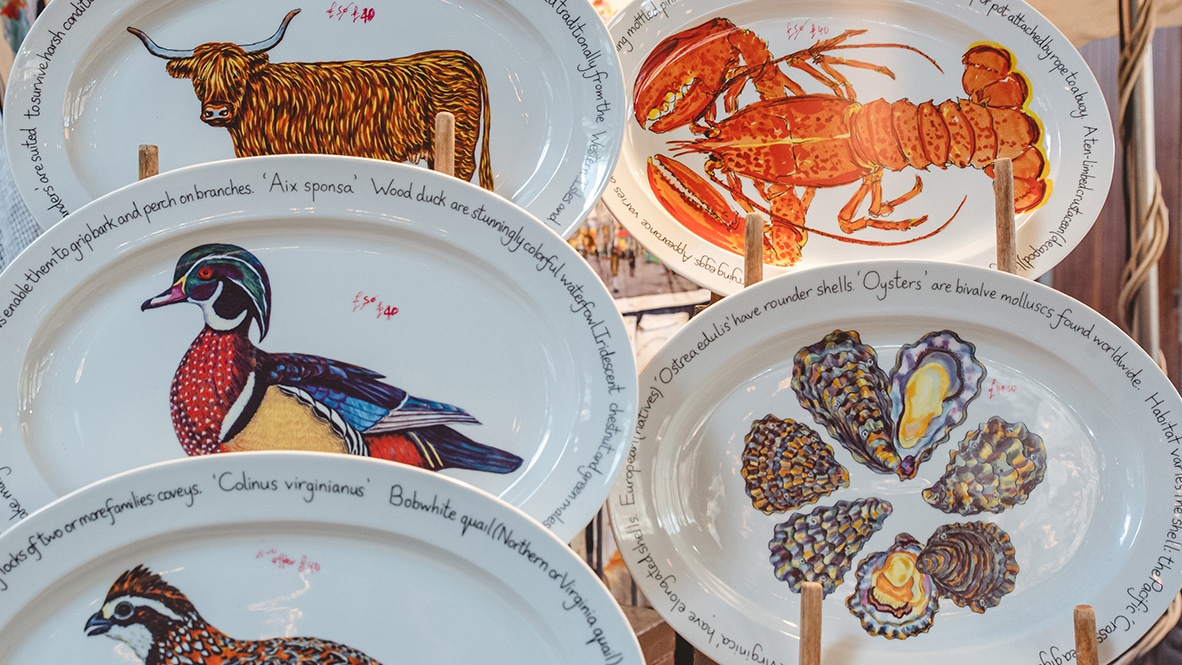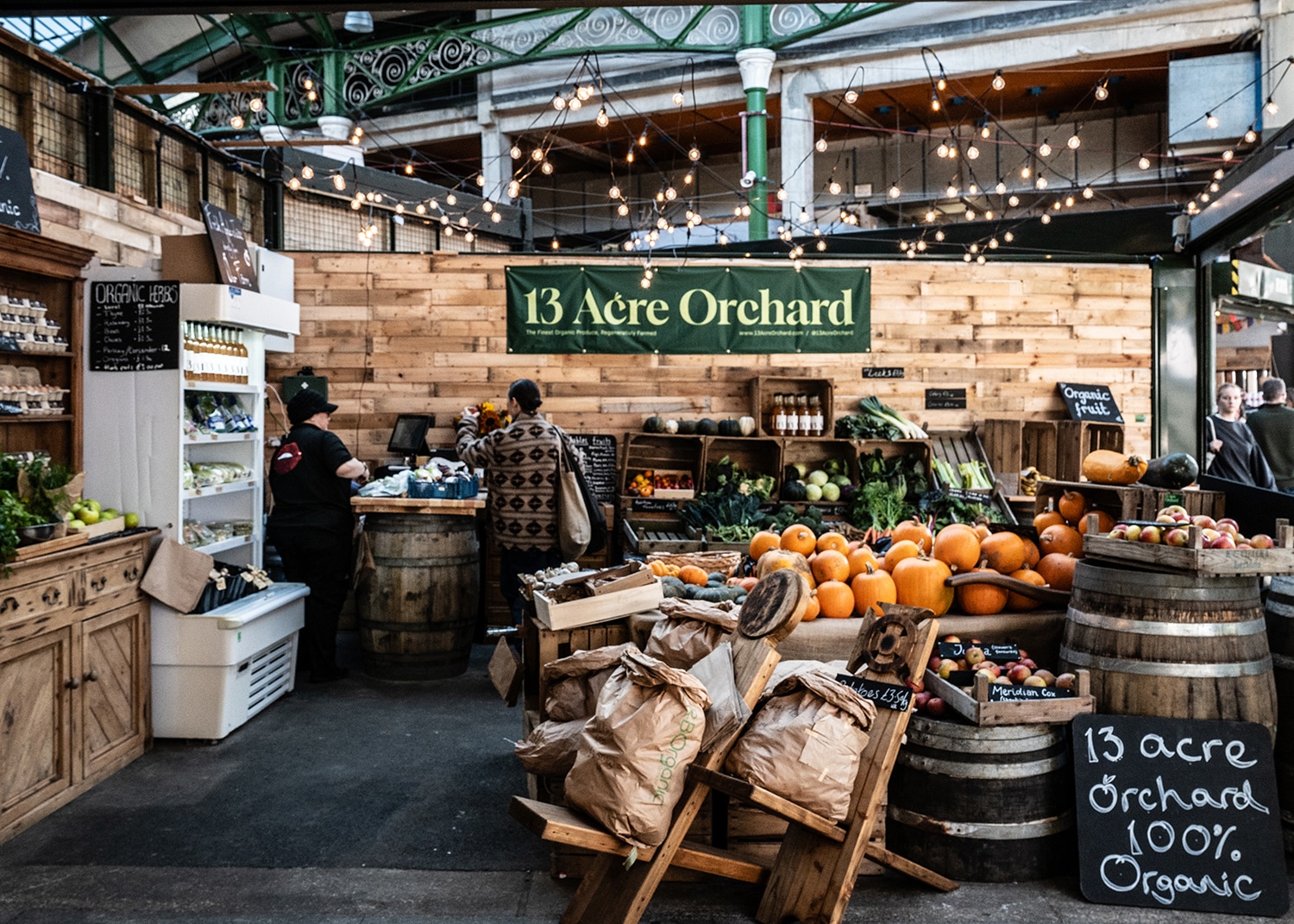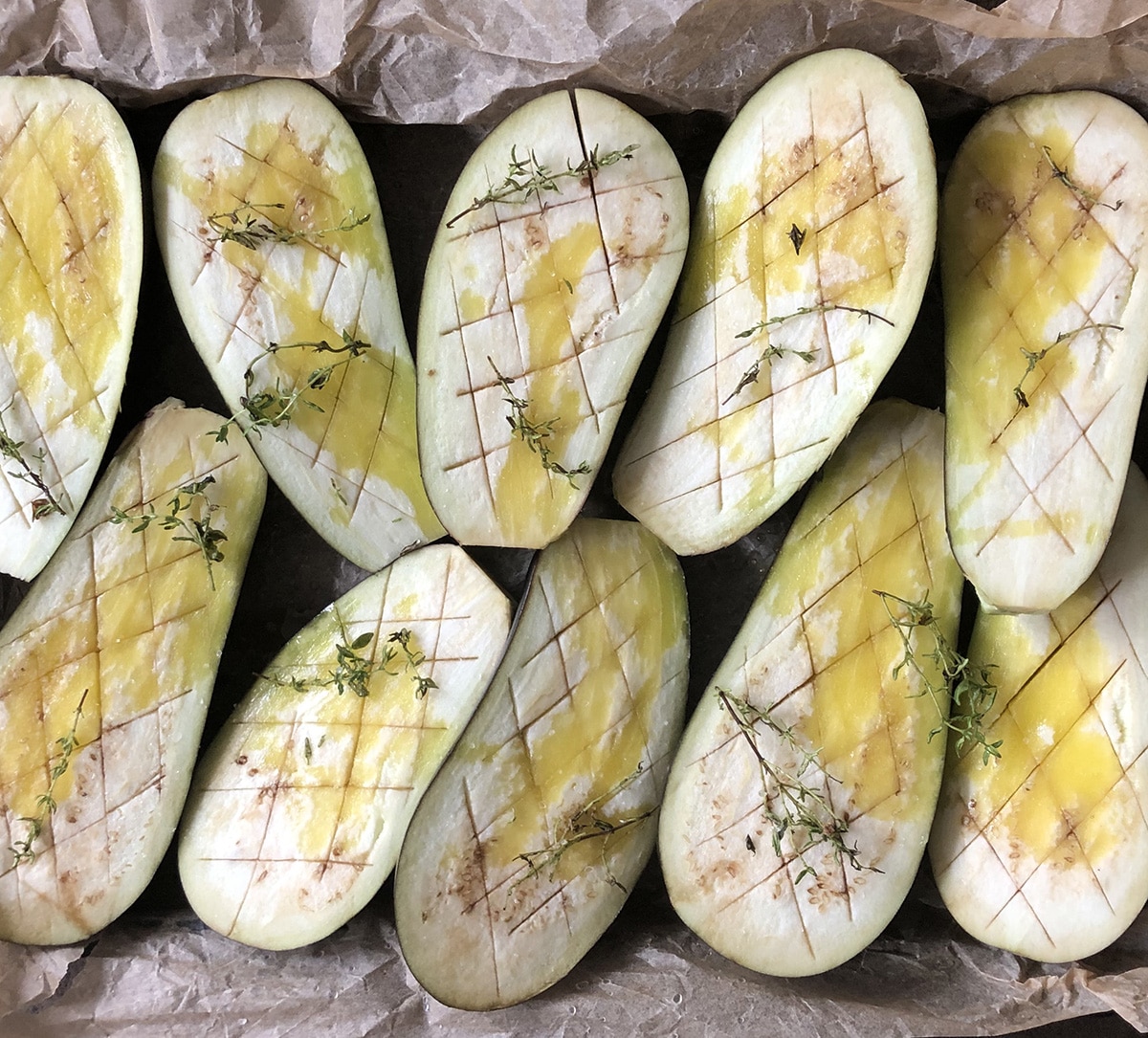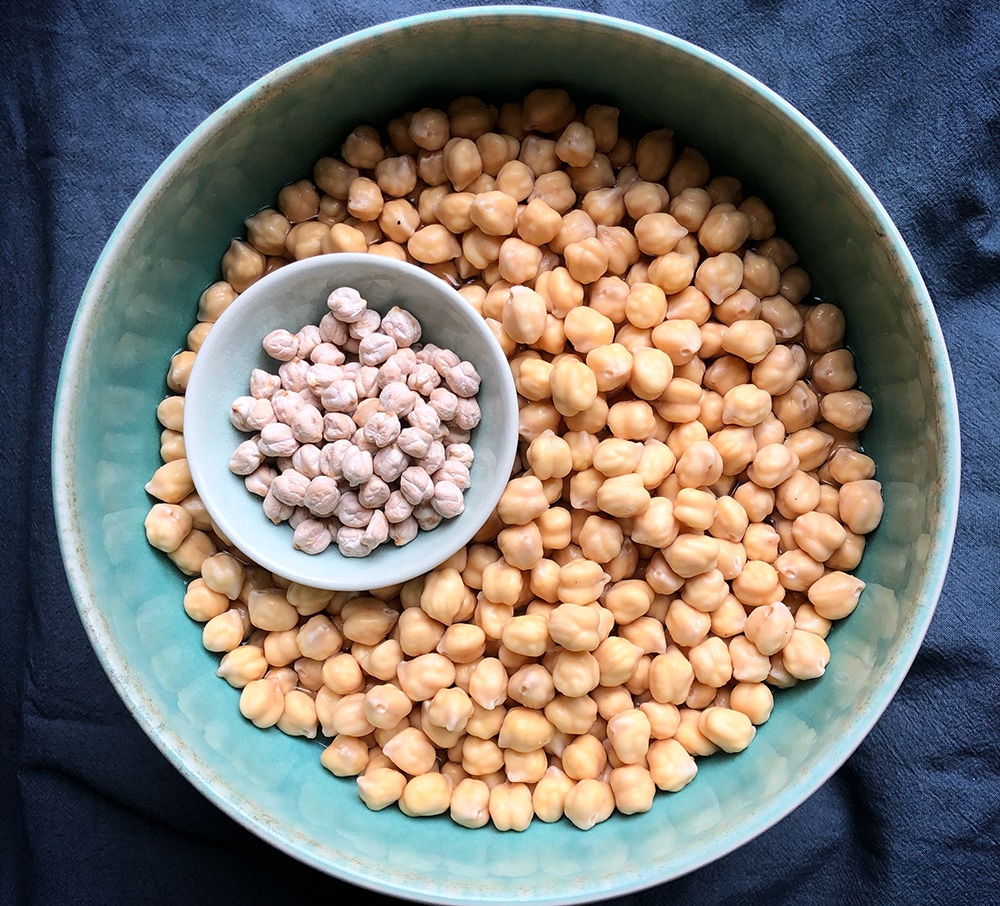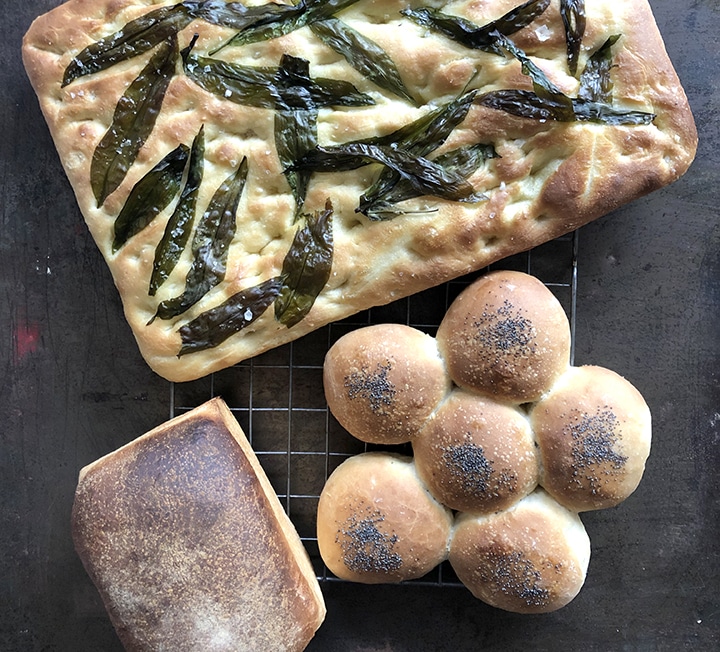Cupboard love: coffee beans
Ed Smith explores the essential components of his kitchen cupboard. This time: coffee beans
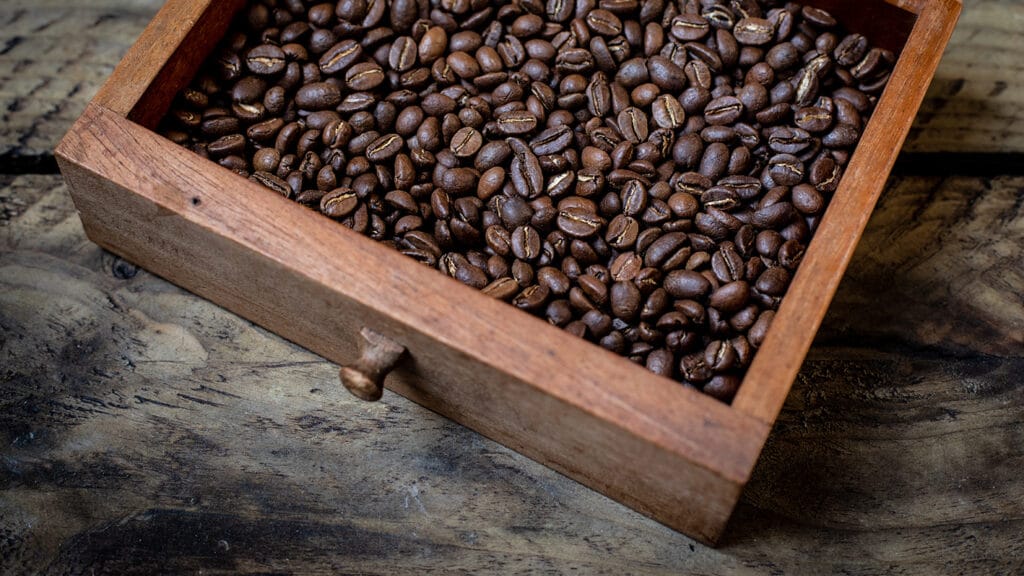

“YOU’LL SEE RECIPES USING COFFEE GRINDS IN RUBS FOR DEEP SOUTH-STYLE MEATS OR IN BRAISING LIQUORS AND BRINES”
Image: Regula Ysewijn
Coffee doesn’t get the respect it deserves. So often, it’s in our consciousness because of its role as a stimulant, rather than its potential as an ingredient. If I had a coffee bean for every time I heard or read “I can’t do anything before my first coffee” or a variant on that theme, well, I’d be in beans for the rest of my life.
As it happens, my store cupboards are usually well appointed with coffee. By and large that’s to suit my morning ritual, but those beans also have a place in my kitchen as a way of adding flavour to food. There are, of course, a few classic dishes that require coffee: tiramisu, mocha-style coffee and chocolate pots, coffee ice cream. But the modern home cook can think beyond those. Coffee is superb as either the star or supporting act in anything frozen (ice cream, sorbet, lollies, granita), anything chocolatey and cakey (tarts, brownies, fondants, cupcakes, layer cakes, sponges), and anything involving cream or dairy (panna cotta, flavoured creams and butters to go with or on top of the aforementioned cakey things).
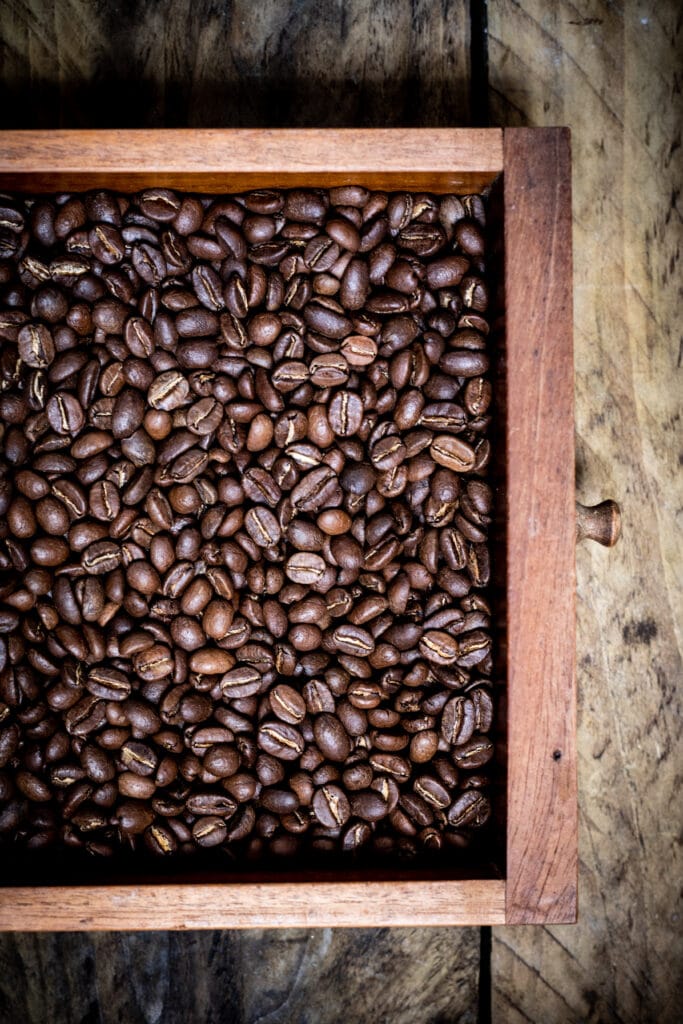
There are also some unconventional but surprisingly pleasing matches. Niki Segnit, author of The Flavour Thesaurus, pitches coffee with blackcurrant, cherry and orange – blood, burnt or marmaladed. And you shouldn’t be surprised to see recipes using coffee grinds in rubs for Deep South-style meats (for pork ribs, chops or butts; beef brisket or steak), often in the company of things like paprika and chilli, or in braising liquors and brines. Here, the coffee tends to offer a savoury background note, adding a richness that’s not necessarily noticeable until it’s pointed out. Similar to how you might add Marmite or soy sauce to a stew or marinade – it’s there, it makes the dish better, but it doesn’t (or shouldn’t) dominate.
To my mind ‘coffee’ is a flavour that food writers and recipe developers need to be more specific about. In sweet dishes in particular, where they’re a key flavour, the coffee used by the home cook is likely to be vital to the success of the dish – what, specifically, should the user of the recipe be looking for? Is the coffee instant, espresso-based or filter brewed? What are the characteristics of the beans that the writer used? Where in the world are they from? How were they roasted? We write ‘milk’ or ‘dark’ chocolate (at the very least); ‘dry’ or ‘off-dry’ white wine. We should be more specific about coffee types, too. To be honest, we could be even more specific on the chocolate and wine fronts as well.
At Borough Market you can see, smell and taste variances in coffee first hand – go to the front counter at Monmouth Coffee, for example, where there are big buckets of beans from Kenya, Rwanda, Ethiopia, Nicaragua and beyond. A few moments choosing beans there is time well spent – if you find yourself a fan of their Costa Rican beans, you’ll probably discover that beans from that country always hit the spot. That said, different coffee beans grown within the same country will have different characteristics – like grapes, coffee berries and the resultant beans vary dramatically dependent on variety, terroir, altitude and climate.
I have recently been working my way through beans roasted by The Colombian Coffee Company. All their beans are from the same country (a clue is in the name), but they sell a number of different varieties, each grown on different soils and at different altitudes. Typica – with honey and caramel notes – would be perfect as the flavouring for a panna cotta or ice cream. The borbón is strong, forthright, a little bit chocolatey, and ideal in a cake. Caturra and yellow caturra (my favourite) are acidic, almost tart, with hints of things like grapefruit and passionfruit – spot on, in my opinion, for a filter-style coffee, served black, or indeed for an iced dish; something pure and unsullied by chocolate or cake crumb. Try using these beans in a granita (effectively the ultimate iced coffee), piled on top of light and voluminous coffee cream, itself piled on top of whichever Borough Market brownie you like the most.
Dress to impress: extra virgin olive oil
Ed Smith on the Market ingredients that, with minimum effort and maximum effect, can embellish a finished dish. This time: extra virgin olive oil


“OLIVES PICKED AND PRESSED EARLY IN THE HARVEST ARE GREENER IN COLOUR AND THEIR OIL IS FRESHER AND GRASSIER”
Image: Regula Ysewijn
“Finish with a drizzle of extra virgin olive oil”, like “season with salt and pepper”, is one of those throwaway lines we see at the end of a recipe so often that we barely take it in. And while the instruction is a clear one, it also horrifically undersells this vital action: good extra virgin olive oil is not an optional seasoning; it’s a crucial ingredient that can have a disproportionately positive effect on a dish. Oh, and more often than not you need a ‘glug’, not a ‘drizzle’.
By my count there are around 40 different pure, cold-pressed extra virgin olive oils available at Borough Market (not including the flavoured ones). There are bottles and tins from Greece, oils from Umbria, from Calabria, from the north and south of Spain and from Croatia, too. Some are blended, some are unfiltered, some come from a single variety of olives, some are extracted from olives from just one small orchard. All of them really taste of something. Here is an incredible natural ingredient that can add depth, structure, aroma and spice to your food.
But what is that taste? It’s actually quite hard to usefully express the character and flavour of extra virgin olive oil. There are plenty of adjectives bandied around: ‘assertive’, ‘rounded’, ‘fruity’, ‘spicy’, ‘olivey’. Do those help? By my reckoning, the quality of an oil comes back to two core characteristics – ‘peppery’ and ‘grassy’ – and, specifically, when those notes hit and for how long they persist.
The peppery hit of an extra virgin olive oil can be really quite aggressive and sometimes fairly astringent, depending on the olive variety but also when those olives were harvested; early, less ripe olives produce more peppery oils. It’s all down to levels of oleocanthal, a compound that’s responsible for the burn, but also olive oil’s famed anti-inflammatories and antioxidants. These qualities will fade in the bottle over time, and also through exposure to warmth and sunlight – a good reason to use your oil liberally.
As well as having that astringency, olives picked and pressed early in the harvest are greener in colour and their oil is fresher and grassier in flavour than those that ripen on the tree. This is because those qualities are largely due to the levels of chlorophyl in the olives when the oil is extracted, and chlorophyl content decreases as olives get riper.
You can imagine, I’m sure, the myriad factors involved in all of this. However, it is relevant to note that all extra virgin olive oil comes from the first pressing of a fruit, and the temperature of the oil through that process must not exceed 27C. To do so would mean it couldn’t be called ‘cold-pressed’. The higher the temperature, the more flavour and character is removed. I highly recommend trying Oliveology’s oils extracted at 17C, 18C and 22C to taste this for yourself.
So how and when to use it? Well: on cooked meats and fish, on risottos and pasta, on soups, soft cheese and charcuterie, too. Oh, and also on vegetables, green ones in particular, particularly if they’ve been grilled, charred or barbecued; though boiled, steamed and raw enjoy a slick of oil as well.
You know this already, I think. Did you also know about adding extra virgin olive oil and a few flakes of salt to a morning bowl of Greek yoghurt with seeds or granola? Try it. Also, over good vanilla or chocolate ice cream, not to mention bitter chocolate tarts and mousses…
The point I want to make is that it’s really worth (a) finding an extra virgin olive oil that you enjoy, and then (b) using it with abandon. If ever you wonder whether that steak or pork chop or piece of cod or mound of vegetables might benefit from some oil, the answer is: “Of course, what are you waiting for?” Yes, some oils feel expensive, but even when poured liberally they go a long way. Celebrate the flavour and viscosity of an extra virgin olive oil puddle. It’ll bring the dish together and make it better, too. As ever, the best thing to do is to use Borough Market’s setting to your advantage: walk a few steps to taste oils from around the world, ask questions, taste again and settle on one. Then splash it, pour it, glug it. Before returning to try, buy and use more.
Dress to impress: extra virgin olive oil
Ed Smith on the Market ingredients that, with minimum effort and maximum effect, can embellish a finished dish. This time: extra virgin olive oil


“I HATED TOMATOES: THE WAY THEY LEAK THEIR COLD GUTS ACROSS YOUR PALATE LIKE SOME LONG-DEAD SEA CREATURE”
Image: John Holdship
Like many of my gender, I have a well-defined and confidently expressed position on pretty much everything, and I hate it when anything messes with that. For example, my stance on musicals was always clear: I loathed them. All either turgid melodramas or banal comedies, with the slightest hint of narrative drive punctured by the kind of terrible songs that Louis Walsh probably likes. Of course, I’d never actually seen a musical, but that was beside the point.
Then I was made to watch Jane Horrocks in Annie Get Your Gun and it was, of course, amazing. A few weeks later, I went to see Matilda and that was great too – and that even had performing children in it. Now I don’t know what to think.
The same thing has recently happened with tomatoes. All my life, I hated them. Cooked, they’re fine, but raw they leak their cold, insipid, jellified guts across your palate like some long-dead sea creature. I dragged them from sandwiches and sifted through salads with my lips pursed.
Then, on a hot day in Italy, I ate an insalata caprese – slices of firm, slightly green tomatoes, treading that line between sweet and acidic, a sprinkle of salt drawing out their juices, which coated the rough hunks of mozzarella and sparked against the small, intense basil leaves – and discovered to my horror that I actually love tomatoes. Or at least some tomatoes.
Force me to eat a fridge-cold supermarket tomato, picked in its infancy and ripened using ethylene gas, and I’ll hate it as much as I’d doubtless still hate Cats or that Queen musical. But offer me a meaty marmonde or a tangy green tiger, grown in summer sunshine on the Isle of Wight and picked yesterday at the absolute peak of its ripeness and I’ll reluctantly accept that on the subject of the tomato, my previous position was (and I really don’t say this lightly) not 100 per cent correct. Damn them all.
Dress to impress: extra virgin olive oil
Ed Smith on the Market ingredients that, with minimum effort and maximum effect, can embellish a finished dish. This time: extra virgin olive oil


“CHEWY HONEYCOMB MELTS TO A SPREADABLE CONSISTENCY WHEN SMEARED MESSILY ON HOT CRUMPETS OR CROISSANTS”
Image: Joseph Fox
Devon flower honeycomb
The waxy, cratered ‘shelf’ in which the bees store their honey is an edible delight in itself: naturally chewy, but melts to a spreadable consistency when smeared messily on hot crumpets or croissants. This one from From Field and Flower comes filled with delicately lemony honey from South Molton, Devon, courtesy of the Wallace family, who make sure to leave the bees enough honeycomb to prevent them being bereft over winter.
Lavender honey
Croatia has both a rich history of honey production and an abundance of lavender – it made sense, then, to combine the two. Acacia honey is infused with the scented purple blooms to create a light, floral honey that works perfectly either stirred into chamomile tea or paired with kozlar, a goat’s cheese soaked in olive skins, the slight bitterness of which acts as the perfect foil for the sweetness of the honey. You’ll find both at Taste Croatia.
Propolis
For bees, propolis is the glue that holds the hive together, quite literally. For humans, its natural antiseptic properties make it a useful cleanser, healer and moisturiser all in one. De Calabria’s comes from organic agriculture farmers Doris and Pasquale, who use beekeeping as a way of naturally pollinating their fields. Their honey and propolis are a happily sustainable biproduct.
Wax wrap
We all know the problem with single use plastic, but it’s not always easy to find alternatives. You can dispense with clingfilm, sure, but then what to use? Borough Market has teamed up with Bermondsey Street Bees to solve that problem. These wraps, now available at The Borough Market Store, are made using 100 per cent cotton, infused with beeswax and natural oils – making them slightly sticky, washable, and safely compostable.
Bee pollen
To make just one small globule of pollen, bees have to visit around 1,500 flowers – but they (and we) are rewarded for their hard work with an excellent source of protein. Oliveology’s pollen is collected by honeybees from the forests and flora of northern Greece, before being carefully dried until powdery in texture. Melt it into cold milk, juice or smoothies, or simply scatter on yoghurt for texture.
Dress to impress: extra virgin olive oil
Ed Smith on the Market ingredients that, with minimum effort and maximum effect, can embellish a finished dish. This time: extra virgin olive oil


“TURMERIC IS A SPICE THAT HAS BEEN UTILISED BY BRITISH COOKS FOR CENTURIES, MOST NOTABLY IN PRESERVES ALONGSIDE MUSTARD”
Image: Ed Smith
These three spices – a triptych of related roots – evoke memories of food from south-east Asia and the Indian sub-continent. Which should be no surprise, as they’re native to those lands. Yet ginger (in particular), turmeric (in part), and galangal (just a bit) get used in western cooking, too, which reflects the fact that they have been traded for as long as any other spice – galangal even gets a mention by Chaucer.
When researching this piece, it became clear that many of the ‘authentic’ eastern recipes that use these three spices use them in their raw or ‘fresh’ form. However, for the purposes of this column, we’re more interested in what happens when we use them once dried. In fact, the recipes and techniques that involve dried and ground turmeric, ginger and galangal are actually more likely to be well-established western ones; conceivably because once the spice had travelled across oceans, the roots were no longer ‘fresh’, and were actually best if already boiled, baked, dried and later on ground.
As always, ground spices keep for six to 12 months in an airtight container before they start to lose potency (of flavour, if not colour).
Turmeric
Due to its yellow colour and belligerent staining ability, turmeric is sometimes known as ‘Indian saffron’ or ‘false saffron’. Yet it has nothing to do with the stamens of the crocus flower. In fact, the ground turmeric powder you have at the back of your spice cupboard derives from a root in the ginger family, mostly grown in south Asia.
As with ginger, it is possible to find turmeric roots in fresh form. Masses of turmeric roots (rhizomes) are harvested around 10 months after being planted. The finger-sized stubs that are collected are boiled then baked until dry, and (generally) ground into the powder you’re familiar with.
The taste is a fairly bitter, near acrid one, though it is also quite mild and tends to be used alongside other spices to add a layer of flavour to a savoury dish, rather than act as the star as things like cumin, fennel seed and black peppercorns might.
Turmeric can be purchased in dried root form – Spice Mountain advises grating it like nutmeg. If you plan to use a fair quantity of it, it’s best to buy when already a powder.
Ginger
Like turmeric, ginger is a flowering plant whose pungent roots (rhizomes) are harvested and used the world over to flavour foods. The plant is thought to originate from the Indian sub-continent, but it’s been farmed across the world for centuries and is vital to multiple cuisines. It is, of course, often used fresh, where its piquant, fiery, near sour-citrus yet soothing flavour is unmistakable.
Young ‘stem’ ginger, candied before it becomes fibrous, is popular too. Dried ginger is processed in the same way as turmeric, and is particularly well used in spice mixes, curry powders and in baking. It’s possible that its tongue-tickling heat is intensified when dried and ground, and it certainly provides a warming background whenever it’s used.
Again, ginger can be purchased in dried root form – again, Spice Mountain advises grating it, but you will find it more practical in pre-ground form.
Galangal
Galangal is also a plant in the ginger family, and the flavoursome part, again, come from the mass of rhizomes that grow under the ground. It is paler and woodier than the ginger root you’re well accustomed to (almost ivory-like), and again is boiled and then baked before being ground (if not used in raw form).
Technically there are two main types of galangal: ‘greater’ galangal from Indonesia and Laos, and ‘lesser’ from south China. The Laos variety is most common over here and, indeed, its peppery, citrusy, piney flavour is something we associate with south-east Asian cooking: Thai, Indonesian, Vietnamese and, of course, Laotian.
Most Western interpretations of recipes incorporating galangal suggest it in raw form. To be honest it is best like this, though you could use dried roots or ground galangal as a substitute which, unless your home cooking is regularly pointed at south Asian cookbooks, also means you can have the flavour in your cupboard for the rare occasions you require it. It’s a tricky one to grate or grind, so you may want to buy it pre-ground. It’s often a flavouring for coconut-based soups and stews – you could try to add the dried root and hope the liquid helps to reconstitute it, releasing the flavours while that happens.
Culinary uses
Turmeric is used in a variety of cuisines, though notably those of India, Kashmir and Pakistan. It’s almost certainly not the nailed on super food that health gurus would have you believe; though it’s not bad for you either. Still, its reputation does mean that the use of this spice has had something of a renaissance in recent years.
Ingredients that enjoy turmeric include eggs (scrambled and omelettes), haddock and rice (think kedgeree), lentils (dal), carrots and cauliflower.
It’s a spice that has been utilised by British cooks for centuries, most notably in preserves alongside mustard seeds – perhaps for colour as much as flavour – and as a key component of curry powder. Piccalilli is one thing that immediately comes to mind. See also coronation chicken.
Contemporary recipes featuring turmeric generally seem to be in liquid form: turmeric lattes, turmeric smoothies, turmeric chai. It’s also regularly a required spice when making your own curry pastes.
Dried ginger pairs well with a number of different ingredients. The first that spring to mind are pumpkin and butternut squash. I like to add pinches and teaspoons of ground ginger to pumpkin soups, any pumpkin-based stew (whether curry or tagine), when roasting squash on their own, and also when making into a sweet pumpkin pie too – along with cinnamon, ginger is one of the sweet spices.
On which note, ground ginger is often used in sweet, baked treats, both in Indian and western cuisine. British gingerbread men and German lebkuchen being two key examples. Think, also, of steamed suet puddings and ginger cake, and old English spiced dried fruit puddings, which more often than not have a hint of ground ginger in them.
Dried ginger is also fantastic when sprinkled on fresh mango or melon. It adds a certain piquancy and tang. The flavour matches well with rhubarb too – add a pinch to the sticks just before you stew.
Galangal has a tart, zingy and peppery flavour, associated with south-east Asian cooking, and particularly fish dishes – whether a dry or wet curry – or to spice up a fresh green papaya salad.
Dried galangal roots or powder can be used to bump up a coconut-based soup, curry or minced pork or beef laap – it’s certainly better than not using it at all, particularly if you’re after an authentic taste of Laotian, Thai, Malaysian or Indonesian cooking.
Recipes to look out for
— The classic Thai recipe using galangal is tom kha gai: poached chicken, squash, coconut and galangal soup. As with most recipes, really it’s fresh galangal that you’re after. But dare I say it, you could substitute that with dried root – whole or a good pinch or two – in someone like Sebby Holmes’ instructions in Cook Thai.
— Look to Justin Gellatly (of Bread Ahead)’s Bread, Cake, Doughnut, Pudding, for things like ginger snaps, ginger and clementine pudding and ginger cake.
— Consider Jessica Seaton’s gingerbread in Gather Cook Feast, which she serves with Gorwydd Caerphilly cheese – available at the Market, of course. Sticky, punchy, treacle enriched ginger bread paired with chalky, mild, mushroomy caerphilly. Sounds wonderful.
— Mrs Beeton’s ginger-spiked tomato sauce, mentioned in Niki Segnit’s The Flavour Thesaurus, would be nothing without the fiery spice.
— Sarit Packer and Itamar Srulovich’s Honey & Co: the baking book has a fantastic pear, ginger and olive oil cake. Worth a bake.
— Anna Jones’ books A Modern Way to Cook and A Modern Way to Eat are big on turmeric. She’s the one to turn to for turmeric-based drinks, but also things like curry leaf and smoky celeriac, and avocado fritters served with a hollandaise turned bright yellow by the spice.
— Head to Packer and Srulovich again for the turmeric cauliflower pickle in Honey & Co: Food from the Middle East.
Market spice heroes
Look out for Bread Ahead’s ginger cake – which tops up stem ginger and syrup, with a fair pile of the ground stuff too.
See Ed’s recipe for mango, coconut, turmeric & ginger ices.
Dress to impress: extra virgin olive oil
Ed Smith on the Market ingredients that, with minimum effort and maximum effect, can embellish a finished dish. This time: extra virgin olive oil


“WHAT MAKES THESE SHEEP PARTICULARLY SPECIAL IS THAT THEY’RE A RARE BREED, INDIGENOUS TO THE AREA”
It’s 10am in Borough Market and Brindisa employee Stuart Green is describing one of his favourite products. “There’s a fudginess to it, with honey, almond – even vanilla notes,” he enthuses. “It has a caramelly, almost white chocolate taste,” his colleague Hugh excitedly chips in. Naturally, anyone listening in would imagine they’re discussing the torta de Santiago, or some rich and squidgy turron – yet Stuart and Hugh are cheesemongers, and the object of their passion in this case is neither cake nor biscuit, but Payoyo de Oveja: a rare, semi-hard and fully flavoursome ewe’s milk cheese.
“Even the Spanish can struggle to find it, it’s so rare,” says Stuart. Similar in its style of production to a manchego, it’s made in the mountains of the Sierra de Grazalema, Andalucia: “An alpine valley, with exceptionally high levels of rainfall.” The result is an abundance of herbs, wild grasses and flowers which, if you’re a sheep, constitute a perfect meal.
For any cheese, this is a good sign: the richer the diet, the better the milk will be – but what makes this breed of sheep particularly special is that it’s a rare breed, indigenous to the area. They’ve been here thousands of years, and play a vital role in the local ecosystem (their grazing maintains the land and prevents forest fires) and the community. “Most breeds of sheep are bred for meat, wool or milk. Grazalema sheep are a good source of all them,” says Stuart. Indeed, between the 17th and 19th centuries, Grazalema was one of Spain’s main sources of wool.
By the late 20th century, however, the breed was registered as endangered and put on the Slow Food Foundation for Biodiversity list. Establishing their Payoyo dairy in 1995, Andalusians Andrés Piña and Carlos Ríos set out to preserve both the area’s historic cheesemaking methods, and its imperilled livestock. “They wanted to make cheese in the traditional, artisan way,” says Stuart, “and this was a good way of also supporting the breed.”
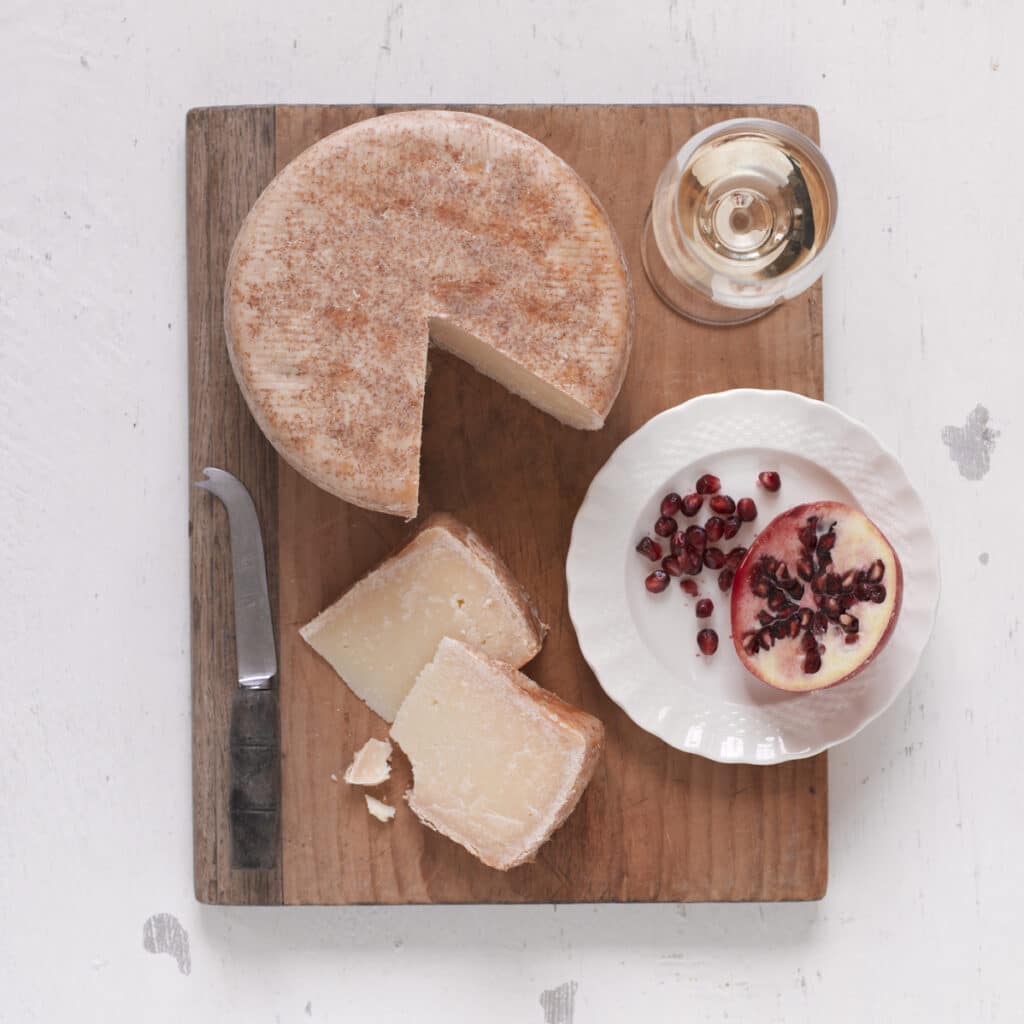
Though the yield is low, the quality of milk Grazalema ewes produce is beyond compare, thanks to the high, fertile pastures. Using the same methods employed by shepherds and goatherds through the centuries, the rennet is made and poured into moulds by hand, and the curds gently pressed: more gently than they are with manchego, making for a crumblier texture. The rind is then covered with a mixture of pork lard and wheatgerm: a local grain heralded here as a ‘health food’, but which at the Payoyo dairy is a nod to the cheesemaking of yesteryear.
Back then, the making of cheese would have coincided with harvest time, and “the mound of harvested crop would have provided the stable conditions in which the cheese could be kept to mature.” These were the days before the advent of cheese rooms or fridges to control temperature and humidity, Stuart continues, so the young cheese would have been buried inside the mound of wheat. Today, the wheatgerm rind is largely symbolic – “a history note” as he puts it, though it does provide a slight maltiness to the taste and adds crunch to the texture.
“I wouldn’t pair it with too much,” he cautions. “Keep it simple, and let the cheese shine.” Some good bread, toasted, or fresh figs or grapes should do the trick – though if meat’s non-negotiable a delicately cured lomo will work nicely, says Tom Robertson, who works with Brindisa’s cured meats. As for drinks, Stuart’s money is on manzanilla sherry “ice cold, for light, fresh, summery fruit flavours – or maybe a sweet pedro ximénez sherry as part of a dessert cheeseboard.”
We enjoy it on its own, because we’re impatient and because it’s too early to be popping the cork. Needless to say, it’s everything we expected: a cheese which looks like a cheese, tastes like a cheese, feels like a cheese – yet in one of those bizarre quirks food can throw at you sometimes, sounds a lot like an almond torte.
Dress to impress: extra virgin olive oil
Ed Smith on the Market ingredients that, with minimum effort and maximum effect, can embellish a finished dish. This time: extra virgin olive oil


“COLLAGEN DISSOLVES TO GELATINE, BECOMING SUCCULENT AND JELLY-LIKE, THICKENING THE LIQUOR IT’S COOKED IN”
It’s in the eye of the beholder, isn’t it, this beauty thing? Indeed, as an (ethical) carnivore I struggled a little when tasked with seeking an ‘ugly’ slab of meat at the Market. Where some might see blood and gore, I see a quick sear or char and a tender chew; and where others balk at marbling, fat and sinew, I see a slow-cooked, melting mass of flavour. All meat looks pretty wondrous to me, whether it’s a prime rib or tough shin.
Or does it? Sitting in the left-hand corner of Ginger Pig’s counter is an armful of lumpy pork jowls, and a mound of smoked Bath chaps, with their mix of five o’clock stubble and heavy, droopy flesh and fat. No one ever uses “you’re looking very jowly at the moment” as a compliment, do they?
Over at Northfield Farm, a pile of beef cheeks lacks the firm, proud crimson stance of a fillet steak, or the conviction of a t-bone. Sometimes they’re masked by a layer of shiny sinew (and are as viscerally unappealing as the photo suggests). Mostly, though, they’re cleaned and cut through, yet display three or four lines of connective tissue, which scream camera-shy rather than selfie stick.
To make matters worse, these ugly ducklings don’t turn into swans when they’re cooked. Whereas loins and sirloins brush up nicely, with their golden crusts, clean lines and blushing pink cut-throughs, cheeks contract into clenched fists, all lumpy and indented. If you close your eyes when you eat them, however, it’s a different matter altogether.
A pig or cow’s cheek muscle pretty much never stops working. Consequently, it’s a tough and fibrous muscle packed with tightly knotted strands of protein, intramuscular fat, remarkably resistant sinew and dogged collagen – which should all be music to the ears of the seasoned cooks among you, as you will know that if treated with a low, slow, gentle touch, those things can be converted into a massively flavourful, unctuous and crowd-pleasing meal.
In particular, collagen dissolves to gelatine, becoming succulent and jelly-like, thickening the liquor it’s cooked in.
Most often, cow’s and pig’s cheeks are braised in wine, stout or dark beers. Over a period of time at a low temperature, the alcohol and meat juices combine to create a rich, viscous gravy. Sweet and sour ingredients like root vegetables and pickled walnuts go well in the mix.
I’ve also had pork jowls that had been cooked as a confit in masses of lard until soft, then crisped up and served with an Asian salad, and beef cheeks patiently smoked until bouncy and tender which, when sliced, revealed joyous seams of jelly.
Unfortunately, I don’t have a hot smoker or buckets of fat at home, so a slow braise is pretty much my standard option for beef cheeks. I’m reminded of recent trips to Spain, where beef cheeks in rich sherry and rioja braising liquor with sweet peppers. When I recently bought a bag of cheeks, that’s exactly how I cooked them, serving the rich and wobbly meat with a gentle, milky cauliflower purée, plus its fresh green leaves.
See Ed’s recipe for braised beef cheeks & cauliflower puree.
Dress to impress: extra virgin olive oil
Ed Smith on the Market ingredients that, with minimum effort and maximum effect, can embellish a finished dish. This time: extra virgin olive oil


“DESPITE MY LOVE FOR IT, I OFTEN FIND HALF A BUNCH OF TARRAGON WASTING AWAY IN MY HERB BOX”
Image: Ed Smith
I came to tarragon quite late in life. Not because we didn’t eat it when I was a child. Rather, I just don’t think I appreciated the anise notes until my taste buds ‘matured’.
The turning point was at a wine tasting event, which served a huge bowl of purple sprouting drenched in butter and more than a generous sprinkling of tarragon. Totally divine. I’ve not looked back, and I’d probably use this herb on every green vegetable I eat, if I wasn’t worried about overkill.
So, yes, this long leaved green herb has strong hints of anise, but also a little vanilla too. Which makes it the perfect match for white fish, chicken and eggs, among other things.
Despite my love for it, I often find half a bunch of tarragon wasting away in my herb box – it’s so powerful and dominant that you don’t need to use much at once; and unless you make a conscious effort to use the originally intended use, time can run out for much of it.
So have a read of the suggestions below, and see if you can make the most of your next bunch.
Storage
Tarragon is a soft green herb and relatively fragile. Don’t leave it out or it’ll dry and wilt; and don’t freeze it or it’ll go soggy and black. It last for about a week in the fridge if wrapped in a damp towel.
Theoretically you can wrap tarragon in damp paper towels, place in a sealable bag and put in the freezer. But I personally haven’t found that to be a great preservation technique – most of the flavour goes and the leaves appear bruised. Similarly, while you can dry tarragon, it’s not nearly as good dehydrated as the likes of rosemary and thyme.
You’d be much better off tapping five or six stems with the back of a knife to release some of the oils, and infusing olive oil, sugar syrup or vodka with this herb.
Cooking tips
In most recipes, it’s the leaves that you’ll use. Pick them from the stems until you’ve got enough (they can be ‘stripped’ relatively easily if you run two fingers in the opposite direction of growth). Then roughly chop. The leaves are soft and could be left whole, but a little slicing seems to extract more flavour.
The stems are, however, well scented. Which means that on occasion they’ll be useful, not least if you’re infusing a liquid with tarragon as mentioned above. The woodiest sprigs also retain a little power when cooked. Whereas the soft leaf is, as a general rule, best added at the last minute, so as to remain fresh or just wilt under latent heat, tarragon stems can handle higher temperatures, so you could add to casseroles or when steaming, without wasting the herb.
Cooking uses
Tarragon has a number of classic (mostly French) partners. Chicken and tarragon are best friends. The most traditional of the recipes is tarragon chicken blanquette – poached chicken with an egg yolk thickened tarragon, cream and button mushroom sauce. I remember making this at catering college and thinking, whilst cooking, that it was just another old, dated, slightly naff dish. But the results are timeless.
The same was true when we made baked tarragon eggs – individual egg ramekins finished with a little cream, cheese and tarragon. So old school. So indulgent. So good.
Any number of chicken and tarragon and chicken and egg dishes can be added to those examples. The flavours work incredibly well. If you want to modernise, how about buttermilk fried chick pieces with a tarragon mayo dip? Or luxurious, creamy, tarragon scrambled eggs on brioche toast? I understand the Balkan states often ‘ferment’ sprigs of tarragon for a few days in salt, then use this to flavour pancakes and omelettes.
Other favourable flavour combinations and tarragon tricks do exist, though. I like the double layering of anise when you match tarragon with fennel: finely slice fennel bulbs, toss with lemon juice, a little olive oil, chopped tarragon and serve with baked white fish.
On which note: tarragon and any white fish works very well. If the chopped herb through sliced fennel trick is too subtle for you, make a tarragon heavy green sauce by blitzing it with lots of olive oil, perhaps bulking with a little fresh parsley, some capers, garlic, lemon juice.
It’s a match for red meat, too. The classic (possibly best?) steak sauce is béarnaise – basically clarified butter, egg yolk and chopped tarragon.
And tarragon goes extremely well with rabbit – chopped through a rabbit pie or terrine, perhaps?
Moving away from traditional matches, as implied earlier on, you can totally put tarragon in a cocktail, thanks to those anise and vanilla qualities.
Finally, you’ll be relieved to know that tarragon works in desserts too. Strawberries are a particularly favourable match – macerate some with sugar and tarragon before using in a trifle or fool. I’ve also used a few sprigs to flavour milk before adding that to an anise and vanilla custard, match with almond flavoured desserts. Or, if you really want to educate your friends in slightly savoury desserts, just sprinkle some chopped tarragon and sea salt over vanilla ice cream, followed by a good drizzle of peppery olive oil.
Market herb hero
A few mentions here. First for Fitz Fine Foods, which stocks an excellent tarragon vinegar. Then The Olive Oil Co and Oliveology, from whom you should buy some quality (but not overbearing) olive oil, bash and handful of tarragon sprig, and infuse into the oil, to use as a dressing or simply to dip your bread in at a later date.
A recipe suggestion
While it was tempting to suggest a recipe for one of the odder dishes mentioned above (that ice cream or custard idea?), sometimes the smartest thing to do is stick to tradition. Well, mostly.
A classic chicken and tarragon blanquette requires the cook to ensure there’s absolutely no colour on the meat. So you effectively poach a portioned chicken until tender, and keep the cream sauce as pure and white as possible.
But there’s so much flavour that comes from browning a chicken that it seems remiss not to. This easy recipe does that, starting the process in a frying pan and finishing it in the oven. It just uses thigh meat, so it’s affordable and fairly fool proof. Appropriately for this series, there’s tarragon at pretty much every stage: as the chicken cooks, in the sauce, and as a garnish at the end.
Should help you get through much of your bunch. Don’t waste the rest.
See Ed’s recipe for chicken thighs with tarragon creme fraiche sauce.
Dress to impress: extra virgin olive oil
Ed Smith on the Market ingredients that, with minimum effort and maximum effect, can embellish a finished dish. This time: extra virgin olive oil


“WE HAVE A PARTICULAR WAY OF GOING ABOUT OUR BUSINESS: NO SHOUTING. IT’S JUST NOT OUR WAY TO SHOUT”
Interview: Ellie Costigan / Portrait: Orlando Gili
Fergus Henderson and Trevor Gulliver set up the original St John restaurant in 1994. Their pared back, no-frills, nose-to-tail approach to cooking and dining revolutionised the London restaurant scene. Its influence can be seen internationally, not least through the successes of St John’s stellar alumni – several of whom can be found at Borough Market.
Did you always agree on what you wanted St John to be?
Fergus: Not entirely. I had a healthy discussion with Trevor…
Trevor: There was never a ‘no’ moment, though. It just made sense.
Fergus: It was a thing of fate. I was cooking at The French House down in Soho and Trevor had the Fire Station. We found this site, and it was one of those things – true love.
Was it a deliberate act, setting up in Smithfield, right next to the meat market?
Trevor: No, not at all. It was derelict and run down. The market, like all markets then, was really falling by the wayside. There was tumbleweed. There was a hint of medieval, particularly at the market at two or three in the morning. Unlike the romance of Richard Burton and Elizabeth Taylor drinking in pubs in Covent Garden, nobody came to drink in the pubs around here.
Fergus: We did.
Trevor: Excuse me. Yes, we did!
You’re famous for your nose-to-tail approach to meat, which was little seen in London restaurants at the time. How did people react?
Trevor: You have to put it into context. We opened in 1994. What the ‘food scene’ is now, whatever that might be, is nothing like it was then. The media came up with every pun possible: “You are offal, but we like you really.”
Fergus: Yes, but then they looked at the menu and it was all delicious. It was also difficult because of where we were…
Trevor: No one ever came to Smithfield, so it was an act of faith even to come here. You walked down this long corridor and hardly anything was open. Now food media is a geometric compression, but there weren’t many food writers then, and there was this misunderstanding: they assumed this was all City boys, testosterone driven and full of men – not true. Then when they eventually came, they saw what we meant. Now everyone’s opening up restaurants with meat, fire, offal and gore, whereas hopefully we’re a very balanced restaurant. We have lots of vegetarian customers and there’s a very simple reason for that: we can cook vegetables. And if you were a vegetarian then, it was very hard to find somewhere to eat. Baking bread is also a big part of what we do.
Indeed, you were baking your own bread on site way before most restaurants. What prompted that?
Fergus: We butcher the meat and do everything else ourselves, so it seemed sensible to make bread ourselves.
Trevor: It’s too grand a word, but it’s a dynamic environment here. The brigade come in in the morning, and the bakers are already baking. Our kitchen is tiny, but it’s efficient. We change our menu twice daily, lots of our ingredients have been caught or shot and sent to us directly and is being hung or dried or butchered. The butcher’s block is at the heart of the kitchen. It’s a great environment for youngsters to learn. We did all sorts of things everyone does now, but they seemed a bit crazy at the time. It took us five years, but we were stubborn. Stubborn in a nice way.
Fergus: As I said once before in an interview, the accusation was that we were luddites – we’re not luddites, but a little bit luddish.

The alumni of St John are impressive, to say the least. You must be very proud of that.
Trevor: People always ask us, “When the boys and girls that work for you go to work elsewhere, what do you say?” We’re delighted, because that means there’s somewhere else for us to go and eat. There’s a network – strings, veins. We can say, go and see this person and they’ll be waiting for you at the other end, you can go and work there. We are also delighted that they sing with their own voice – from Padella, to Lyle’s, to Hereford Road, to the Marksman, they all have their own personality, but they’re all part of our little world.
They all speak highly of their time here, too – clearly the attitudes you have instilled in them have had a lasting impact, which would perhaps suggest they’re not prevalent elsewhere.
Trevor: We have a particular way of going about our business: no shouting. Not because ‘there’s no shouting’, but because it’s not our way to shout. Lots of our friends have happy kitchens, but unfortunately, it’s quite apparent that there are still a lot of ills in kitchens. It’d be foolish to say it doesn’t exist – every ‘ism’ you shouldn’t do is still obvious and still there. I don’t really like chains as restaurants, I regard them as food retail, and there are various reasons why: how they conduct themselves and go about business, how they treat their staff, which is not conducive to developing individuals. To us, it’s important to protect and develop people’s skills.
Why is it important to you that staff are happy?
Fergus: When a chef is happy, you can feel it in the food. At St John, the whole chain is a happy one: the animal, the people who deliver it, butcher it, and do the cooking. And you can feel the happiness in the food when you eat it.
Trevor: If you don’t like people, don’t be part of this business. You think that’s a silly thing to say, but sometimes you just wonder. And it affects not just the people you work with, but the customers too. It sounds a bit trite, but a restaurant is an old friend. It’s a place you go to if something big has happened in your life. It’s where you first met your partner, or once a year when you’re in London it’s the place you always go. It’s something you can look forward to. People come to us because that day, it’s a St John day, and that’s a good day. And we’re delighted that they make that decision. When they come in smiling, we smile too.
How do you manage to stick to your guns and remain relevant?
Trevor: It’s important to understand that our next new menu is happening right now, and the next menu after that will happen this afternoon. We’re not fixed in what we do. We are as bright and forward-looking today as when we started, and that culture is there among all our people. Every day, different things occur. A recipe will never stay the same, because ingredients change. As Fergus says, nature writes the menu. We don’t want to be seen just as the ‘offal palace’.
Fergus: We don’t follow the latest trends. We’re not trendy at all. Trends and food don’t go together; trends have nothing to do with a real restaurant.
Trevor: We do things we like to do. Sometimes they don’t work, sometimes they do. There was a seven-year quest for the right chocolate. It’s the same with wine: we spent two years on a project making a new St John Mâcon. It came on Tuesday and it’s great. And it’s immensely reasonable. Then a few years later we’ll move on again. There are always different things going on.

Speaking of wine, all the ingredients on the menu are British, yet all the wine is French. Why’s that?
Fergus: They’re our nearest neighbours who make good wine.
Trevor: If you see a menu and it’s got pasta, curry, something with chips, fish, steak, spaghetti, you think, I’m not going there. Why would you look at a wine list from all over the place and think, that’s exciting? One, we want to work directly with the vineyard, and two, if you’re drinking Burgundy it’s quite nice to stay with that when you move to a second bottle. It makes absolute sense. Once you start mucking around with wine menus, it usually means you’re either chasing profit or trends. Legend has it we are still the only Michelin-starred restaurant in the world that does bag-in-a-box wine.
Is it important to you that your cooking is accessible?
Trevor: Some people can come every day and some people come once a year, it doesn’t really matter – we’re always here. You can have a nice dish here and a glass of wine for less than 10 quid. And it will hopefully be well cooked, well made, well reared. I feel there’s a misnomer to say it’s expensive, when you know where it comes from: the price is just a function of what we have to pay for our produce. We get all kinds of people here, the great and the good, and no one’s famous at St John. Sometimes people just come in to buy their bread, and never eat here. I don’t think we’ve ever been accused of being elitist.
You have a lot of fun with food, but you’re clearly very serious about it, too.
Trevor: Yes, we’re mightily serious. There’s no room for error. You can hopefully sense that. There is an air of confidence. When you walk into a restaurant that knows what it’s doing, you can feel it.
Fergus: We’ve become an institution, in the good sense.
Trevor: It’s an institution that’s about to fall down, the building is so cracked. It’s characterful – you can put your hand through some of the holes in the wall.
Do you have a defined set of ethics?
Trevor: It’s just common sense. We care about everything we do, and the provenance. Also, if you’ve got a whole animal and you’ve killed it, it only seems respectful to eat it all. We do sprout tops, because when you look at a sprout stick, there are also leaves. It’s just common sense. And it’s just dull, eating processed meat that’s come over as cargo from Brazil: crap meat from farms and cows that are taking out rainforests and crapping everywhere…
Fergus: Don’t say ‘crapping’ – say ‘producing methane’.
Trevor: Producing methane. It isn’t a ‘movement’ or ‘back to nature’ or any of that kind of stuff, it’s just about working with the farmer directly and learning how to butcher, which makes for a much better chef. And the quality of the meat is better. Using a whole animal allowed us in the old days to save some money. But if you aspire to be good people of the planet, as much as you can, it all rolls together. We can only hope that people are coming in here not because we’re cheerleaders, but because we can cook and they’re confident in how we source.
Why do you think we ever moved away from eating seasonally and utilising all of the animal?
Trevor: It’s a big question. People have been shipping in food to eat in London for hundreds of years, so ending up with supermarkets was perhaps a natural progression. I think supermarkets are fully responsible.
Fergus: Everybody wants everything cheaper. They want an orange in summer and they want it to be the perfect orange; milk to be homogenised. People don’t sit at the table. It’s very sad. The problem is people don’t see the animal. The butchers, greengrocers, fishmongers – all of those single distribution shops have all gone.
Trevor: I asked a genuine question at the fish counter in the supermarket recently, and he said, “I haven’t done the course yet.” Having a dialogue with the butcher or fishmonger, it no longer happens in most places. The trouble is, people won’t support their local butcher, eat better meat but maybe eat less of it – instead, they’ll be straight into the supermarket. And they’ll lose the butcher, and the farmer will then find it difficult to make a living. It’s a worrying time. Those farmers matter. Maybe we’re luddites after all.
Are people still surprised by what you do?
Trevor: Occasionally we see an old couple come in and open one of our ‘sensibles’, a bottle of white, at the bar, then ask each other, “Shall we eat in here?” They look at the menu and say, “Ooh, actually I’m not sure about this.” And you can see them getting flustered, because there isn’t a lot of narrative. The reason we keep it simple is because the first hors d’oeuvre, if you will, is the server – the conversation you have with them.
Fergus: You see the change in their face when they start to eat… and then they say, “This is really good.” Then they relax.
Trevor: It’s been more than 25 years and we’re lucky to do what we do, but sometimes it still feels everything is against you. It’s a tough business. A good restaurant takes time. It takes patience. A good restaurant has a lot of regulars, which we have – a regular can be every week or once a year, it doesn’t matter. When they want to come, we will be here.
Dress to impress: extra virgin olive oil
Ed Smith on the Market ingredients that, with minimum effort and maximum effect, can embellish a finished dish. This time: extra virgin olive oil


“I ALWAYS AVOID THOSE TRAFFIC-LIGHT TRIO PACKS BECAUSE THE RED PEPPER IS USUALLY THE ONLY ONE I’M AFTER”
Peppers shout of summer. Although dedicated British growers will be crossing fingers for sweltering sunshine and won’t begin harvesting until late August, markets are awash with southern Mediterranean peppers by June.
I’m talking about the ubiquitous bell peppers, or perhaps the sweet and slender romanos, rather than any of the more bijoux, mini varieties, Mexican specialities or feisty chilis. Bell peppers do, of course, come in plenty of colours, but I always avoid those traffic-light trio packs because the red pepper is usually the only one I’m after. Green peppers are, in fact, just immature peppers and that lack of ripening results in a rather bitter, grassy taste that only really gets to shine alongside rich ingredients such as lamb or pork and has disastrously indigestible consequences when blitzed raw in a gazpacho. Yellow, orange and purple peppers seem to be little more than a gimmick to me as they have neither the acidic punch of the green nor the natural sweetness of the red.
Raw peppers may offer welcome crunch to a salad or colour to a platter of crudités, but it’s not until they’re roasted that peppers really deliver their magic – at once velvety, smoky and sweet. And, if you’re preparing a couple, why not make it half a dozen?
It’s vital to char the skins for that depth of flavour, whichever way you decide to roast the peppers. If you’ve been cooking over coals in the garden you could make use of the barbecue’s dying heat by throwing on half a dozen peppers to blacken and blister while you eat your meal. The naked flame of the gas hob is often suggested as a means of charring the skin, but frankly my life’s too short to be turning individual peppers over the heat (and cleaning up the sticky juices afterwards) when an oven does the job just as well.
Get the oven really hot, at least 200C, and roast the peppers on a baking tray lined with greaseproof paper. Your kitchen will smell glorious after about 20 minutes, when it’s probably time to turn the peppers, but do remember you want the skin to blacken. Once the peppers are thoroughly blistered and charred, remove the tray from the oven and pile the peppers up in a heap that you can cover with an upturned bowl or pan – you need to create a steamy environment in which the pepper flesh sweats away from the skin, so there’s really no need for plastic bags or cling film. Once cool enough to handle, but not completely cold, slip the skins off the pepper flesh and remove the stalks and seeds. I strain the remains left in the tray, catching all those pepper juices that I’ll add to a soup or stew later.
How to use your roasted peppers
— As is, in a large sliver, on top of bruschetta with goat’s cheese or piled up Spanish-style on bread with a slice of fried pork loin as a ‘montadito’ (serve with sherry and you’re essentially in Seville). Added to any number of sandwiches for a layer of juicy sweetness, in place of (or as well as) more calorific mayo.
— Chopped into ribbons, bathed in extra virgin olive oil and served in salads, with deeply savoury or piquant ingredients, highlighting their sweetness, such as anchovies, seaweed, olives or capers. A prerequisite for salade Niçoise and superb stirred into cooked haricot beans with fresh tomatoes, basil and a good slosh of vinegar. With ribbons of roasted, skinned aubergine and generous quantities of garlic for a traditional Catalan escalivada.
— Sliced and thrown in with fried onions and garlic for a quick and especially delicious starting point for all those pepper stews such as peperonata, pipérade or chakchuka (the pre-roasting is an absolute game changer when it comes to the depth of flavour) or simply to throw in to a pasta sauce.
— Blitzed in the blender (and if you’re feeling lazy you don’t even need to remove the skin) with garlic, chilli, breadcrumbs and olive oil for a classic Provençale rouille, perfect with fish soup or just served as a dip. Whizzed up with harissa to tame its heat or blended into hummus for a welcome change. Or quite possibly in, my all-time favourite roasted pepper dip from the Middle East, muhumarra, where the subtle smokiness sings alongside walnuts, garlic and sweet-sour pomegranate molasses.
See Jenny’s recipe for muhumarra.
